Biology Questions and Answers Form 1 – Biology Form One Notes
Biology Questions and Answers Form 1
KCSE Revision Questions and Answers
K.C.S.E Online Revision
Biology Notes Form 1 – Biology Form 1 Notes – Form 1 Biology Notes
Introduction to Biology
Biology is a branch of science that deals with the study of living things. There are diverse forms of life on earth ranging from the invisible microscopic living things to the gigantic life forms. It aims at explaining the living world in terms of scientific principles.
It is important to note, however, that living things interact with the non living things in the environment as Well. Biology, therefore also entails the study of non living things as well.
The role of human beings in shaping the environment is also investigated in biology.
In summary, biology deals with the study of origins, types, nature, growth, development, interactions and maintenance of all life forms on earth.
Branches of Biology
Biology is such a broad field of knowledge. It is divided into two broad branches
1. Zoology– This is a branch of biology that deals with the study of animal life.
2. Botany– This is a branch of biology that deals with the study of plant life.
Within the two branches, there exist even smaller branches because the branches (botany and Zoology) are very wide and complex.
The smaller branches of biology include:
a) Ecology– This is the study of the interrelationships between organisms and their environment. Ecology aims at establishing how organisms are related to each other and their environment.
Ecology is further subdivided into smaller branches. These can be forest ecology, marine ecology, rangeland ecology etc.
b) Genetics– This sub-branch of biology deals with the study of inheritance and variation. It deals with the study of how variations (differences) occur between parents and their offspring. It is also concerned with how various characteristics are passed on from parents to offspring.
c) Entomology– This is the study of insects.
d) Parasitology– This is the study of parasites.
e) Physiology– This deals with the study of the functions of various structures of an organism. It deals with the processes that take place in the body of organisms.
f) Anatomy– The study of the internal structure of organisms
g) Microbiology– This is the study of microorganisms
h) Bacteriology– The study of bacteria
i) Ornithology– This is the study of birds
j) Itchthology-This is the study of fishes
This list is in-exhaustive as there are very many other branches of biology.
Importance of biology
- The study of biology is very important. The knowledge acquired from this study can benefit an individual in myriad ways. The study of biology is important in that:
- The knowledge acquired from the study of biology can be very helpful in solving environmental problems such as food shortage, poor health services, pollution and environmental degradation.
- The study of biology can grant one an entry into various careers such as medicine, veterinary medicine, animal husbandry, horticulture and dentistry.
- The study of biology leads to development of scientific skills which are very useful in life. These include skills of observing, identifying, recording, classifying, measuring, analyzing and evaluating. These skills can enable one learn how to make right choices and lead an improved life.
- Through the study of biology man learns the causes of human, plant and human diseases and how best these diseases can be prevented and cured.
- Biological knowledge acquired in the study of biology is very useful in enhancing international cooperation. Some biology related international conventions include:> Joint development of HIV/AIDS vaccine by Kenyan and British scientists.
> The coordinated fight against Severe Acute Respiratory Syndrome involving scientist all over the world.
> The fight to save the ozone layer from depletion through various international agreements such as the Kyoto protocol.
> Management of resources through international treaties such as the CITES (Convention against International Trade on Endangered Species).
Characteristics Of Living Things
Living things share a lot of characteristics in common. These characteristics are discussed below.
a) Nutrition
Nutrition is the process by which living things obtain and assimilate (utilize) nutrients. Living things require nutrients for various purposes; growth, repair of worn out tissues and for provision of energy. Plants manufacture their own food using light energy, carbon (IV) oxide, water and mineral salts through the process of photosynthesis. Conversely, animals feed on already manufactured foods from plants and other animals.
b) Respiration
Respiration is the process by which food substances are chemically broken down to release energy. During respiration, oxygen is used while energy, carbon (IV) oxide and water are released. Respiration occurs in all living cells.
The energy produced in living things is very useful as it enables the living things carry out some of their physiological processes.
The energy is also required for growth and development, movement and repair of worn out tissues.
c) Gaseous Exchange
Gaseous exchange refers to the process by which living things exchange oxygen and carbon (IV) oxide across the respiratory surfaces. Animals always take in air rich in oxygen and give out air rich in carbon (IV) oxide.
Carbon (IV) oxide is a waste product of chemical reactions in the body. Animals require oxygen for respiration. Gaseous exchange, therefore, enables animals obtain oxygen for respiration and get rid of carbon (IV) oxide, a waste product.
Plants, however, require carbon (IV) oxide for photosynthesis during the day. They give away oxygen as a by-product. The plants equally require oxygen for respiration and give away carbon (IV) oxide.
d) Excretion
This is the process by which living things separate and eliminate the waste or harmful materials resulting from chemical reactions Within the cells. These harmful waste products of metabolism maybe toxic to the body if they are left to accumulate in the cells of the living things
e) Growth and Development
Growth refers to an irreversible increase in size and mass while development refers to the irreversible change in complexity of the structure of living things. Growth and development of living things is essential as it enables the living things to attain maximum size that can enable them to perform their functions and roles.
f) Reproduction
This is the process by which living things give rise to new individuals of the same kind. All living things reproduce. Reproduction is essential as it leads to perpetuation of species and it avoids extinction of certain animals and plants.
g) Irritability
This is the ability of living things to perceive (detect) changes in their environment and respond to them appropriately. Living things respond to changes in temperature, humidity, light, presence or absence of certain chemicals.
Response of organisms to these changes is crucial as it enables them to escape from harmful stimuli. Ability to detect changes in the environment also enables organisms to obtain resources in their environment.
h) Movement
Movement refers to change is position (displacement) of a part or parts of an organism. Movement in plants includes folding of leaves, closing of flowers and growing of shoots towards light. The change of position of an entire organism from one position to another is locomotion.
Study questions
a) Motor vehicles move, use energy and produce carbon dioxide and water. Similar characteristics occur in living organisms yet motor vehicles are not classified as living. List the other characteristics of living things that do NOT occur in motor vehicles.
b) Give the name to the study of:
- The cell
- Micro—organisms
- The study of differences between parents and their offspring
- The study of relationships between organisms and their environment.Collection of Specimen
We have defined biology as the study of living things. For effective study, a biologist may have to collect some living things or some parts of living things for observation and analysis. The living things or parts of living things that are used for biological study are called specimens.
Biological studies always take place in laboratories. A laboratory is a building or a room that is designed and equipped for scientific studies.
Collections of living things especially animals may not be very easy. Some of the animals are not easy to catch while some are quite dangerous. Knowledge on proper specimen collection and handling of is very important. We will discuss some of the apparatus used in specimen collection.
a) Sweep net– This is used for catching flying insects.
b) Fish net– This is used for trapping small fish and other small Water animals.
c) Pooter– This is used for sucking small animals from rock surfaces or barks of trees.
d) Bait trap– This is used for attracting and trapping small animals including rats.
e) Pit fall trap– This is used for catching crawling animals.
f) Pair of forceps– This is an apparatus used for picking up small crawling animals e.g. stinging insects.
g) Specimen bottles– These are bottles used for keeping collected specimen. They are of different sizes depending on the size of the specimen being studied.
h) Magnifying lens– This is used to enlarge small objects. A hand lens is a common magnifying lens used in the laboratory. The magnifying power of the hand lenses is always indicated on the lens e. g. X10, X5, X8. The magnifying power of a lens shows how many times the image will be enlarged compared to the object.
How to use a magnifying lens
To use a magnifying lens, place the object to be enlarged on the bench. Hold the magnifying lens on one hand and while closing one eye, move the lens towards the object until the image comes into clear focus.
If a magnifying lens is used to make a drawing of a specimen, the magnification of the drawing will have no relation with the size of the drawing.
The magnification of the drawing can be calculated using the formula shown below.
Drawing magnification: Length of drawing divided by Length of the actual object
The sign of “times” must come before the magnification value e. g. X10, X5, X15 etc.
Precautions During Collection and Observation of Specimen
While collecting specimen for observation, a biologist should play close attention to the following:
- Collect only the number of specimen you need; do not collect more than you need.
- Do not harm the specimen during the capture/collection exercise.
- Do not destroy the natural habitat of the specimens.
- Handle dangerous/injurious specimens with care. Such injurious specimens can be stinging plants or insects. Forceps and hand gloves should be used in such cases.Comparison Between Plants and Animals
Plants
- most posses chlorophyll which gives them their green color. Chlorophyll is very useful in the process of photosynthesis
- their cells have cellulose cell walls
- they respond slowly to changes in their environment
- plants are immobile
- they lack specialized excretory organsAnimals
- they lack chlorophyll content hence feed on already manufactured food materials
- their cells lack cellulose cell walls
- they respond quickly to changes in their environment
- most animals move around in search of food, shelter and mates
- have complex excretory organsChapter Two: Classification 1
Introduction
- Biology has been defined as the study of living things (living organisms). Even though all living things share similar characteristics discussed in the introductory chapter, the living things exhibit a lot of differences.In particular, animals and plants are all living things yet they differ in many aspects. Amongst animals and plants also there exist a lot of differences.
There are millions of different plant and animal types exhibiting a range of differences. This created a need for a classification system of living things to make study of the living organisms easier.
- Classification refers to the grouping of living organisms according to their structure.
- In classification, organisms that share a lot of similarities are placed under one group referred to as a taxon (plural: taxa).
- Other than the similarities, grouping of the organisms also takes into account the evolutionary relationships (phylogeny) of the organisms. It is believed that all organisms once had a common ancestor (theory of evolution). During classification, organisms that are believed to have evolved along the same line of evolution are placed in one taxon.
- The scientific study of classification is known as taxonomy. A biologist studying taxonomy is a taxonomist.
- In classifying organisms taxonomists to a great extent rely on the use of external observable features of organisms.External features of plants used in classification
- The rhizoids as in moss plant
- Fronds in ferns
- The type of root; tap root, adventitious, fibrous, prop, buttress roots.
- Stem presence and type.
- Presence or absence of flowers
- Type of leaves; simple or compound; leaf venation- parallel or net work veined.
- Presence and types of fruits and cones.External features of animals used in classification
- Tentacles in hydra
- Body covering- feathers, scales, hair or fur
- Shells in snails
- Wings in birds
- Proglotids in tapeworms
- Mammary glands in mammals
- Locomotory structures
- Body pigmentationImportance of Classification
- Classification systems improve our ability to explain relationships among things.
- Classification helps in identifying living organisms into their correct groups for reference
- Classification helps in avoiding chaos and confusion when dealing with animals as it arranges the information on organisms in an orderly manner.
- Classification brings together living organisms with similar characteristics together but separate those with different features.
- Taxonomic systems provide relatively stable, unique, and unequivocal names for organisms
- It makes the study of such a wide variety of organisms easy.
- It projects before us a good picture of all life forms at a glance.
- It helps us understand the interrelationship among different groups of organisms.
- It serves as a base for the development of other biological sciences such as biogeography etc.
- Various fields of applied biology such as agriculture, public health and environmental biology depend on classification of pests, disease vectors, pathogens and components of an ecosystem.Historical background of Classification
- In the past, scientists used to classify organisms based on personal conveniences. They heavily relied on very few observable features. There was no standard classification system as each and every scientist would classify organisms in a way that would suit his intentions.
- In particular, living organisms were simply classified as plants or animals. The plants were also classified as herbs, trees, shrubs. Animals were also grouped into herbivores, carnivores and omnivores.
- Some biologists would also classify plants as:a) Edible or non edible
b) Flowering or non-flowering
- The modern classification systems take into account the evolutionary relationships between living organisms. It has overcome the many weaknesses of the artificial (traditional) classification systems.
- From the original parents, arose new groups of organisms that went under structural changes that enabled them to live in different habitats. The structural changes account for the great diversity of living organisms observed today.
- Carolus Linnaeus, a Sweddish biologist is largely credited for his significant contribution to the development of the modern classification system.Taxonomic Units of Classification
- Taxonomic units of classification refer to the groups or taxa into which organisms are placed as a matter of convenience.
- Grouping of organisms in these groups is based on easily observable characteristics that are common in that group.
- Living organisms which share a lot of characteristics are placed in the same group.
- Each taxonomic unit reflects the position of an organism in relation to the others in the classification scheme.
- In a classification scheme, a hierarchy of groups is recognized and it proceeds from the first largest and highest group, the kingdom to the smallest and lowest unit, the species.
- There are seven taxonomic units of classification.1. Kingdom
2. Phylum (animals)/division (plants)
3. Class
4. Order
5. Family
6. Genus
7. Species
All living organisms are classified into five major kingdoms:
a) Kingdom Monera– This is composed of microscopic unicellular organisms mainly bacteria e.g amoeba.
b) Kingdom Protoctista– This kingdom is comprised of members who are microscopic. Though, some are large enough to be seen with the naked eyes.
Members of this kingdom include algae and protozoa.
c) Kingdom Fungi– Members of this kingdom comprises the mushrooms, toadstools, moulds and yeast.
d) Kingdom Plantae– This kingdom comprises the moss plant, ferns, maize plants, hibiscus, meru oak tree etc.
e) Kingdom Animalia — Members of this kingdom include the tapeworms, hydra, fishes, human beings, lizards, earthworms etc.
In hierarchy of classification, a kingdom is further divided into several phyla (plural of phylum) or divisions (in plants). Within the phyla or divisions, organisms are further sorted out into groups known as classes based on their similarities and mode of life.
Each class is further subdivided into small groups called orders based on structural similarities. Orders subdivide into families which subdivide into genera (plural for genus).
Genera are then subdivided into smaller units of classification called the species.
Species is the smallest unit of classification whose members share many similarities and can freely interbreed to give rise to fertile or viable offspring.
Members of a particular species can, however, exhibit various differences e. g. differences in skin colour or body forms. Within the species, organisms can further be classified based on the differences in colour or forms.
In humans, this gives the races, in animals the term used is breed while in plants, variety is preferred. In bacteria, the term strain is used to describe the variant forms.
Members of different but very closely related species can breed but the resulting offspring will be sterile (infertile). In particular, a mule is a sterile offspring between a horse and a donkey.
Moving from kingdom to species, it is important to note that the number of organisms in each taxon decreases. The similarities, however, increase as one moves from kingdom to species.
Scientific Naming of Living Organisms
- Scientific naming involves assigning an organism two names in Latin language. The naming system was developed by Carolus Linnaeus in the 18th century.
- Organisms always have common names and scientific names. Common names are local names by which the organisms are known in the vernacular languages. In particular, a cat is an English name, mbura is a luo name, paka is a Swahili name etc. these names differ across cultures and cannot be used by scientists to communicate across the world. This makes sharing scientific knowledge on organisms very difficult. There was need for a common language and this led to development of scientific language in latin.
- Latin was the preferred language since it was the first language of civilization that was widely spoken at that time. Similarly, latin language is a dead language hence not subjected to a lot of changes. The scientific names are, therefore, static.
- Scientific names are the valid names by which organisms are known all over the world.
- In scientific naming, an organism is assigned a specific name that is unique. The specific name adopts two names. This implies that the specific scientific name of an organism has two names. This double naming system is known as binomial nomenclature.
- In binomial nomenclature, an organism is assigned its genus name and species name.
- Assigning of scientific names to living organisms is governed by a definite set of rules which are internationally recognized and referred to as binomial nomenclature which literally means the rule of double naming system.Rules of Binomial Nomenclature
Binomial nomenclature requires that:
a) The first part of the scientific name is that of the genus name which should begin with a capital letter. The second name is that of species. The species name should be written in small letters e. g.
a) Maize- Zea mays
b) Lion- Panthera leo
c) Leopard- Panthera pardus
d) Domestic dog- Canisfamiliaris
e) Human being- Homo sapiens
b) When printed in books and other printed works, the scientific names should be printed in italics. However, in handwritten manuscripts and typed works, the genus and species names should be lined separately.
Printed work- Homo sapiens
c) The specific name is frequently written with the name of the scientist who first adequately described and named the organism e. g. Balanus balanoides Linneaus. d) Scientists must give a latinised name for a newly described animal or plant species where a Latin name is missing e,g.
Aloe kilzfiensis– A type of aloe found in kilifi
Meladogyne kikuyuensis– A nematode found in kikuyu.
Origin of scientific names
Scientific names assigned to organisms can be:
- Descriptive
- Geographical
- CommemorativeChapter Three: The Cell
Introduction
- The bodies of living organisms are made up of small microscopic units called cells. The cells make up the structures of the living organisms and are responsible for carrying out various biological processes in the bodies of the living organisms.
- Some organisms are made up of a single cell only e.g. amoeba and other bacteria in the kingdom monera. These organisms are known as unicellular organisms.
- Other organisms are composed of many cells and are said to be multicellular. Most plants and animals are multicellular.
- A cell is the basic functional unit of an organism.
- Being very small, the cell cannot be seen with a naked eye. A powerful magnifying instrument is required. The microscope is used to view the cells.
- Development of the light microscope
- In 1650, Zacharias Jansen invented the compound microscope which combines two lenses for greater magnification.
- In 1665, Robert Hooke used an improved compound microscope to observe cells.
- Between 1650 and 1700, Anthony Van Leewenhoeck developed a better microscope with lenses which provided a greater magnification. He used the microscope to view nuclei and unicellular organisms including bacteria.
- The development of the electron microscope in 1930s significantly improved microbial studies. Through this microscope, it was possible to study very finer details of structures.The Light Microscope
- This is the most commonly used microscope in schools and institutions that do not focus on very fine details of the internal structures of cells.
- The light microscope uses a beam of light to illuminate the specimen being studied.
- A microscope is a delicate and expensive instrument that should be handled with care. It is imperative to understand the parts and functions of various parts of a microscope.
- In a light microscope, the eye piece and the objective lenses both contribute to the magnification of the specimen.
- The total magnification of the specimen viewed under a light microscope will be given by:
- Magnification: Eyepiece lens magnification X Objective lens magnification
- In particular, if the eyepiece lens magnification is X10 and objective lens magnification power is X8, then the total magnification of the specimen would be:Magnification=Eyepiece magnification X Objective lens magnification
= 10 X 8
=X80.
Figure 1. The light microscope
Handling and Care of the Microscope
Part of the microscope: Limb
function: supports the body tube and stage
Base:
function: provides firm and steady support to the microscope
Body tube:
function: holds the eyepiece and the revolving nose piece
Coarse adjustment knob:
function: raises or lowers the body tube through longer distances to bring the image into sharper focus
Fine adjustment knob:
function: raises or lowers the body tube through smaller distances to bring the image into sharper focus. it is mostly used with the high power objective lens
Diaphragm:
function: an aperture that regulates the amount of light passing through the condenser to illuminate the specimen
Eye-piece:
function: contains a lens which contributes to the magnification of the specimen under review
Objective lens:
function: bring image into focus and magnifies it.
Mirror:
function: reflects light through the condenser to the object on the stage
Revolving nose piece:
function: holds the objective lenses in place and enables the change from one objective lens to the other
Condenser:
function: concentrates light on the object on stage
Stage:
function: flat platform where specimen on the slide is placed.it has two clips to hold the slide into position
The following rules should be observed when handling the microscope:
> Always use both hands when carrying the microscope. One hand should hold the base to provide support while the other hand holds the limb.
> Never place the microscope too close to the edge of the working bench or table.
> Do not touch the mirror or the lenses with your fingers.
> Dirty lenses should be cleaned using a special soft lens tissue paper or tissue paper moistened with ethanol. The other parts of the microscope may be cleaned using a microscope.
> Do not wet any part of the microscope.
> Make sure the low power objective lens clicks into position in line with the eye piece before and after use.
> After use, always clean and store the microscope in a safe place, free from moisture and dust.
How to use the Microscope
- Place the microscope on the bench with the stage facing away from you.
- Turn the low power objective lens until it clicks into position.
- Ensure that the diaphragm is fully open.
- Look through the eye-piece with one eye; meanwhile adjust the mirror under the stage to ensure that maximum light can pass through. The circular area seen is referred to as the field of view.
- Again look through the eyepiece while adjusting the mirror under the stage to ensure that sufficient light is passing through the specimen.
- Use the coarse adjustment knob to bring the low power objective lens to the lowest point.
- Viewing through the eye-piece, turn the coarse adjustment knob gently until the specimen comes into focus.
- Use the fine adjustment knob to bring the image into sharp focus. Make a drawing of what you observe.
- For higher magnifications, turn the medium power objective lens into position and adjust the focus using the coarse adjustment knob. For sharper images, use the fine adjustment knob.
- If finer details are required, turn the high power objective lens into position; now use only the fine adjustment knob to bring the details into sharper focus.Cell Structures as seen under the Light Microscope
- The structures within the cell are referred to as organelles. Some of the cell organelles that can be observed under the light microscope include the cell wall, cell membrane, cytoplasm, nucleus, vacuole and chloroplasts.
- These cell organelles perform specific functions within the cell.Figure 2 Plant and animal cells as seen under the light microscope
The cell as seen under the Electron Microscope
- The electron microscope is more powerful than the light microscope. It uses a beam of electrons to illuminate the specimen instead of light as in the case of light microscope.
- Electron microscope can magnify an object up to 500,000 times.
- It also has a very high resolving power. Resolving power is the ability to distinguish between separate things which are close to each other.
- The high resolving power makes the electron microscope a very important research tool in microbiology.
- Through the electron microscope, very fine details of the cell can be observed.Figure 4. The plant cell
Structure and Functions of the Cell Organelles
Cell membrane
- The cell membrane, also known as plasma membrane or plasmalemma consists of three layers when viewed under the electron microscope. The three layers are composed of one layer of phospholipid sandwiched between two protein layers.
- It is flexible and has pores. The cell membrane is important in that:
- It encloses the cell contents.
- It allows for selective movement of materials in and out of the cells. The pores allows materials particularly of small molecular size to move in and out of the cellsCytoplasm
- Cytoplasm consists of a fluid medium in which chemical reactions take place. It contains dissolved substances.
- organelles and other inclusions such as starch, glycogen, fat droplets and many other dissolved substances.
- Cytoplasm is not static; it undergoes a movement known as cytoplasmic streaming.
- It provides a suitable medium for cellular reactions to take place.c) Mitochondrion
- Mitochondrion is a sausage shaped organelle that provides sites for respiratory reactions that yield energy for the cell. Mitochondria is thus, referred to as the powerhouse of the cell.
- It is bound by two membranes. The inner membrane is greatly folded into cristae to increase surface area for respiration.
- The arrangement and number of mitochondria in a cell depends on the cell energy requirements. Cells that require large amounts of energy contain high amount of mitochondria.
- Such cells include muscle cell, sperm cell, apical meristem cells, and kidney cell.> Mitochondria are self replicative that is they can divide to form new ones.
Figure 5. The Mitochondrion (Animal)
Figure 6, (generalize(lmage23 mitochondrion Structure)
d) Endoplasmic Reticulum
- Endoplasmic reticulum appears as a series of interconnected channels, running throughout the cytoplasm.
- Their membranes are continuous with the outer membrane of the nuclear membrane.
- Some endoplasmic reticula have granules called ribosomes on their surfaces and are referred to as rough or granular endoplasmic reticula. Endoplasmic reticula that are not associated with ribosomes are called smooth endoplasmic reticula.
- The rough endoplasmic reticulum transports proteins while the smooth endoplasmic reticulum transports lipids.
- Generally, endoplasmic reticula also act as storage areas for synthesized molecules such as enzymes. They also contribute to mechanical support.e) Ribosomes
- These are spherical in shape. While some are bound to the endoplasmic reticula, some ribosomes are scattered within the cytoplasm (free ribosomes). Their largest dimension is 25 nanometres.
- They are synthesised in the nucleolus.
- They form sites for protein synthesis.f) Lysosomes
- These are spherical sac-like organelles bound by a single membrane. They contain lytic enzvmes which break down large molecules. destroy Worn out oraanelles or even the entire cells.
- Lysosomes also play crucial role in digestion in unicellular organisms.
- The lysosomes are also vital in breakdown of bacteria and other harmful microbes that might have been ingested in food. This explains their high relative abundance in injured or infected cells.
- The membrane of the lysosomes are intact. This is important because if the enzymes leak out, they may destroy the whole cell.g)Golgi bodies/Golgi apparatus
- These are stacks of membrane bound tube like sacs. They are found close to the cell membrane.
- Golgi bodies perform the following functions:1) They package and transport glycoproteins.
2) They are involved in secretion of synthesized proteins and carbohydrates.
3) They manufacture lysosomes.
Note: Golgi bodies are abundant in cells that are active in secretion. For instance pancreatic cells which secrete enzymes and the nerve cells which secrete neurotransmitter substances.
h)Centrioles
- These are rod shaped structures located just outside the nuclear membrane.
- They take part in cell division and also in the formation of cilia and flagella in lower organisms.
- Plant cells lack centrioles.i) Chloroplasts
- Chloroplasts are egg-shaped structures surrounded by two membranes and contain a gel- like stroma through which runs a system of membranes that are stacked together to form grana.
- The granum contains chlorophyll which traps light energy that is used during photosynthesis.
- It is in the chloroplasts that photosynthesis takes place.j) Vacuoles
- These are sacs that are filled with fluid called cell sap. Vacuoles vary in size.
- Animal cells contain small vacuoles which may be numerous in the cells while plant cells contain one large centrally placed vacuole.
- Sap vacuoles store sugars and salts thereby contributing to the osmotic properties of the cell. This influences how materials move in and out of the cell.
- In some unicellular organisms, food vacuole stores and digests food substances while the contractile vacuole excretes unwanted materials from the cell.k) Cell wall
- This is the rigid outer cover of plant cells and some lower organisms.
- In plants it is composed of cellulose fibres.
- Cell wall is important in that:1. It gives plant cells their definite shape
2. It provides mechanical support and protection against mechanical injury.
3. The cell wall allows gases, water and other substances to pass through it.
i) Nucleus
- Nucleus is a double membrane bound structure made up of a viscous fluid known as nucleoplasm in which nucleolus and chromatin materials are suspended. The nuclear membrane has minute pores, nuclear pores which allow materials to move in and out of the nucleus.
- Nucleus controls all the activities of the cell.
- Nucleolus is responsible for manufacture of ribosomes while chromatin contains hereditary materials.
- Nucleus generally takes a sperical or oval shape.Comparison between Plant Cells and Animal Cells
While there exist many similarities between plant and animal cells, there are a number of differences.
Plant cells
- usually large
- regular in shape
- has a cell wall
- usually has a large central vacuole
- cytoplasm and nucleus are usually located towards the periphery of the cell
- some have chloroplast
- usually more store oil, starch and proteins
- has no centrioleAnimal cells
- smaller in size
- irregular in shape
- has no cell wall
- usually has no vacuole but when present,they are often temporary and small structures within the cytoplasm
- cytoplasm occupies most space in the cell with the nucleus usually centrally placed
- has no chloroplast
- stores glycogen and fats
- has centriolesEstimation of Cell Size
The light microscope can be used to estimate the size of a cell. Most cells have diameters smaller than a millimeter. Due to this, cell sizes are always measures in smaller units.
These are micrometres and nanometers. These units of measurements are related as shown below.
1 millimeter (mm) = 1000 micrometres (pm).
1 micrometer (pm) = 1000 nanometres (nm).
Procedure in cell size estimation
- One requires a microscope, transparent ruler marked in millimeters and a prepared slide of cells.
- With the low power objective lens in place, keep a transparent ruler on the stage of the microscope.
- Focus so that the millimeters marks on the ruler are seen as thick dark lines.
- Estimate the diameter of the field of view by counting the one millimeter spaces between the first mark and the last one across the field of view. Count only the spaces between two thick dark lines.
- Convert the diameter of the field of view from millimeters to micrometres.
- Remove the ruler and place the prepared slide of cells.
- Count the number of cells along the diameter of the field of view.
- Calculate the diameter of one cell using the formula:cell diameter = diameter of the field of view in micrometers divided by number of cells.
Cell Specialization. Tissues. Organs and Organ Systems
Cell Specialization/Cell Differentiation
- This refers to the process by which a cell becomes structurally modified to perform specific functions
- While cells have a basic outline, they become differentiated to perform specific functions
- In particular, the root hair cell has extended surface for absorption while the sperm cell has a tail-like extension for swimming towards the ovum.
Tissues
- A tissue is a group of cells of a particular type that are grouped together to perform the same function.a) Tissue types in animals
1. Epithelial tissue– This is a thin continuous layer of cells for lining and protection of internal and external surfaces.
2. Skeletal muscle– This is a bundle or sheets of elongated cells with fibres that can contract. Its contraction and relaxation brings about movement.
4. Blood tissue– This is a fluid containing red blood cells, white blood cells and platelets.
The main functions of blood tissue are transportation of nutrients and gases as well as protection of the body against infections.
5. Connective tissue– This tissue consists of strong fibres that connects other tissues and organs thereby holding them in position.
b)Tissue types in plants
1. Epidermal tissue– This is a single thin layer of cells covering the outer surfaces. It protects inner tissues of plants from mechanical damage and infection.
2. Palisade tissue– This is a group of cells rich in chloroplasts containing chlorophyll. It has a site for the absorption of light energy and manufacture of food by photosynthesis.
3. Parenchyma tissue– This tissue consists of special thin walled irregularly shaped cells. They form packaging and storage cells.
4.Conducting tissue/Vascular bundle– This tissue consists of xylem and phloem. Xylem conducts water and dissolved mineral salts in a plant while phloem conducts food substances in solution.
Organs
- An organ is a group of specialized tissues that are grouped together to perform a common function.
- Organs in animals include:a) Heart– composed of connective, muscle, epithelial and blood tissues.
b) Kidney– Composed of connective, epithelial and muscle tissues
c) Brain– Composed of epithelial, connective tissues
d) Lungs– Composed of epithelial, connective tissues.
- Organs in plants include:a) Roots– composed of epidermal, conducting and parenchyma tissues.
b) Flowers– This is composed of epidermal, conducting tissues.
c) Stem– Composed of conducting, parenchyma, and epidermal tissues and palisade tissues in some cases
d) Leaves– Composed of palisade, conducting and epidermal tissues.
Organ system
This is a group of organs Whose functions are coordinated and synchronized to perform the same function.
Organ systems are more pronounced in animals than in plants
Organ systems in animals include
a) Digestive system composed of organs such as oesophagus, stomach, intestines and their associated glands.
b) Circulatory system composed of the heart, blood vessels (arteries, veins, capillaries). c) Excretory this is composed of kidney, liver, and blood vessels.
d) Respiratory system composed of trachea, bronchus, and lungs.
e) Reproductive system composed of the reproductive organs and associated glands.
f) Nervous systems composed of the brain, spinal cord, eye, ear organs.
Chapter Four: Cell Physiology
Introduction
- Physiology refers to the branch of biology that deals with the study of functions and activities of life or of living matter such as organs, tissues or cells. It aims at understanding the mechanism of living.
- In simpler terms, physiology refers to the processes and functions that take place inside the body cells of organisms.
- Cell physiology refers to the study of functions of the cell structures. The cell structures perform various functions of life. In particular:a) Chloroplasts play a vital role in carbohydrate synthesis.
b) Mitochondrion produces energy required to carry out life processes.
c) Ribosomes manufacture of proteins.
- These physiological processes require various raw materials for them to take place.
- For photosynthesis to occur, carbon (IV) oxide, mineral salts and water have to be taken into the chloroplasts.
- For respiration (energy production) to take place, food substrate such as glucose and oxygen have to be taken into the mitochondrion. Energy, carbon (IV) oxide, water and alcohol (in plants) are some of the end products of respiration.
- Some of the end products of the physiological processes such as carbon (IV) oxide can be harmful when allowed to accumulate in the cells. They, thus, have to be eliminated from the cells.
- This implies that there is a constant flow of materials in and out of the cells and the cell organelles where these physiological processes are taking place. There is a constant movement of materials across the cell membrane in the cells.
- This chapter discusses the properties of the cell membrane and the processes through which materials move in and out of the cells.Structure of the membrane
- A membrane is a surface structure that encloses the cell and cell organelles.
- The membranes include the cell membrane, tonoplasts, nuclei membrane, mitochondrial membrane and chloroplast membrane.
- The membranes have a common basic structure which regulates the movement of materials in and out of the cells.
- The cell membrane is made up of a phospholipid layer sandwiched by two protein layer (it is a lipoprotein layer) the overall thickness of the cell membrane is about 7.5 nm thick.
- The membrane is perforated by small pores that allow the passage of substances in and out of the cells.Properties of the cell membrane
a) The cell membrane is semi permeable– The pores that occur on the cell membrane allows the passage of the small size molecules but does not allow the passage of the large sized molecules.
Such a membrane is said to be selectively permeable or semi-permeable. In particular, when a cell is surrounded by a dilute sugar solution, the small sized water molecules will enter the cell but the larger sugar molecules will not pass through the cell membrane.
In contrast, the cell wall is permeable as it allows both sugar and water molecules to pass through it; it has larger pores. This property of selectively permeability enables the cell membrane to select what enters and leaves the cell.
b)The cell membrane is sensitive to changes in temperature and pH– Cell membranes are made up of protein. Proteins are adversely affected by extreme changes in temperature and pH.
Changes in temperature and pH will alter the structure of the cell membrane thereby hindering the normal functioning of the cell membrane. High temperature denatures (destroys) the proteins thereby impairing the functions of the cell membrane.
c)The cell membrane possesses electric charges– The cell membrane has both positive and negative charges. These charges affect the manner in which substances move in and out of the ells. The charges also enable the cell to detect changes in the environment.
Physiological Processes of the Cell membrane
- In this section, we discuss the various physiological processes through which materials move in and out of the cells across the cell membrane.
- Materials move in and out of the cells through three main physiological processes:a) Diffusion
b) Osmosis
c) Active transport
Diffusion
- From kinetic theory, matter is made up of particles that are in continuous random motion.
- In solids, the particles are at fixed positions and can only vibrate at these fixed positions.
- In liquids and gases, the particles are loosely held and are free to move from one region to another randomly. This movement of gas or liquid particles is observed to be from regions of high concentration to a region of low concentration. The process by which particles move from a region of high concentration to a region of low concentration is known as diffusion.
- In particular, the scent of a flower or perfume experienced by an individual is as a result of the flower scent particles or perfume particles move from a region of high concentration.
- Diffusion occurs until the regions have an even concentration of the liquid or gas particles.
- The difference in concentration of particles between the region of high concentration and region of low concentration is known as the diffusion gradient/concentration gradient.
Demonstration of the process of diffusion using_potassium manganate (VII)
Requirements: potassium manganate (VII) crystals, glass tubing, 100 cm3 beaker and water.
Procedure
a) Hold the glass tubing vertically in a beaker so that one end of the tubing rests on the bottom of the beaker.
b) Cautiously and quickly drop a crystal of potassium manganate (VII) through the upper opening of the glass tubing.
c) Close the upper hand of the glass tubing with the thumb.
d) Half fill the beaker with water.
e) Carefully withdraw vertically the glass tubing so that the crystal is left undisturbed at the bottom of the beaker.
f) Record your observations for the first 15 minutes.
g) Explain your observations.
Expected observations
- After some time, the purple colour of the potassium manganate (VII) spread throughout the water and eventually all the water turned purple.Explanation
- The crystals of potassium manganate (VII) are highly concentrated with the potassium manganate (VII) particles. The potassium manganate (VII) particles break away from the crystals, dissolve in water and then diffuse through the water until they are evenly distributed.The Role of Diffusion in Living Organisms
a) In Plants
Diffusion plays an important role in plants in that:
- It helps in absorption of mineral salts from the soil to the plant. Most salts dissolve in soil water. For those salts whose concentration in soil water is higher that their concentration in the cell sap of root hair cells, they move into the root hair cells through diffusion. Plants require mineral salts for numerous life processes.
- Diffusion plays a role in gaseous exchange in plants. The respiratory gases (oxygen and carbon (IV) oxide) diffuse across the stomata and lenticels of plants.
- Diffusion also contributes to the transportation of manufactured food materials from the leaves to other parts of the plant.b) In Animals
In animals diffusion plays the following important roles
- It helps in the absorption of digested food materials in the alimentary canal. End products of digestion such as amino acids and glucose diffuse across the wall of the ileum into the blood for transport to other parts of the animal body.
- Diffusion also plays a significant role in gaseous exchange in animals. In animals, gaseous exchange occurs at certain structures known as respiratory surfaces.These include the skin, gills, lungs, tracheal system and the cell membrane (in unicellular organisms). Gaseous exchange at these surfaces occurs through the process of diffusion.
- Diffusion is important in excretion of nitrogenous wastes especially in unicellular animals.Factors affecting the rate of Diffusion
a) Diffusion gradient
- A greater diffusion gradient between two points increases the rate of diffusion. Increasing the concentration of diffusing molecules also increases diffusion gradient with corresponding regions hence increases the rate of diffusion.b) Surface area to volume ratio
- Rate of diffusion directly depends on the surface area to volume ratio. The greater the surface area to volume ratio, the greater the rate of diffusion will be. Conversely, low surface area to volume ratio results in a low diffusion rate.
- This implies that diffusion rate is greater in small organisms than the large organisms. This is because the small organisms have a large surface area to volume ratio. As a result, most of their body parts are closer to the external surrounding leading to faster diffusion.
- Small organisms can, therefore, depend on diffusion alone as a means of transporting foods, respiratory gases and waste products.
- To large organisms, diffusion alone is inadequate as a means of transport of foods and excretion. They have an additional transport system.
- Organisms always lose heat to the surrounding through diffusion. This implies that small animals lose a lot of heat to the surrounding compared to the large animals.c) Thickness of membranes and tissues
- The thicker the membrane or tissue, the lower the rate of diffusion. This is because the distance covered by the diffusing molecules is greater through the thicker membranes.
- The rate of diffusion is higher in thinner membranes.d) Size of molecules
- Small and light molecules diffuse much faster than the heavy and large sized particles.e)Temperature
- An increase in temperature increases the energy content of the diffusing particles; thereby causing them to move faster, this implies that the rate of diffusion increases with increase in temperature.Osmosis
- Osmosis is a process by which solvent molecules move from a region of high concentration (dilute solution) to a region of low concentration (concentrated solution) through a semi permeable membrane.
- Osmosis can be described as a special type of diffusion since it involves movement of solvent (Water) particles from a region of high concentration to a region of low concentration.
Demonstration of Osmosis Using a Visking Tubing
Requirements
5OOcm3 beaker, visking tubing, a piece of thread, glass rod, concentrated sugar solution, 500 cm3 distilled Water.
Procedure
1. Into the beaker, put 350 cm3 of the distilled water.
2. Dip the visking tubing in water to moisten it. Open the visking tubing and tie one end with the thread provided.
3. Half fill the visking tubing with the sugar solution provided and then tie the open end of the tubing. Ensure no sugar solution spills out of the tubing.
4. Immerse the visking tubing into the distilled water in the beaker and suspend it using the glass rod provided.
5. Leave the set up for about 30 minutes.
6. Record your observations.
7.Explain the observations made.
Observations
- The visking tubing became swollen indicating that its cell contents increased. The amount of water in the beaker decreased. This implies that water moved from the beaker into the visking tubing.Explanation
- The visking tubing contains both sugar and water molecules. The beaker contains a higher concentration of water molecules than the visking tubing. The water molecules diffused from the beaker (where they are highly concentrated) into the visking tubing (where they are lowly concentrated).Even though there is a higher concentration of sugar molecules in the visking tubing, they were not able to diffuse out of the visking tubing due to their large molecular sizes. The visking tubing is semi permeable.
- Other than visking tubing, dialysis tubing or cellophane are also other semi permeable membranes that can be used in this experiment.Osmosis explained
- When two separate solutions are separated by a semi permeable membrane, there will be movement of water molecules from their region of high concentration (dilute solution) to a region of low concentration (the highly concentrated solution) across the semi permeable membrane. The semi permeable membrane does not allow movement of solute particles across it.
- The movement of the water molecules continues until the separate solutions have the same concentrations.
- Solutions with the same concentrations are referred to as isotonic solutions. The solutions are said to be isotonic to each other.
- A lowly concentrated solution (dilute solution) is referred to as a hypotonic solution. A hypotonic solution has less of the solute molecules but more of the solvent molecules.
- A highly concentrated solution with more of the solute particles but less of the solvent particles is referred to as a hypertonic solution.
- When isotonic solutions are separated with a semi permeable membrane, there will be no net movement of solvent molecules to any of the solutions since they have the same concentration of solvent molecules.Osmotic pressure
- When a concentrated solution is separated from distilled water by a semi permeable membrane, the concentrated solution will develop a force with which it draws water through the semi permeable membrane from the distilled water.
- Osmotic pressure refers to the force with which a concentrated solution draws water to itself.
- An osmometer is an instrument used to measure the osmotic pressure.Osmotic potential
- This is a measure of the pressure a solution would develop to withdraw water molecules from pure water when separated by a semi permeable membrane.Water Relations in Animals
- As discussed earlier, the cell membrane is semi permeable. Let us discuss what would happen if an animal cell say red blood cell is placed in solutions of varying concentrationsa) Red blood cell in hypotonic solution e. g. distilled water
- Distilled water has a higher concentration of water molecules compared to the red blood cell cytoplasm.When a red blood cell is placed in a hypotonic solution, water will move into the cell through osmosis. The cell will swell and burst. Swelling of red blood cell when placed in a hypotonic solution is referred to as haemolysis. The cell is said to be haemolysed.
b) Red blood cell in hypertonic solution
- A hypertonic solution has a low concentration of water molecules compared to the red blood cell cytoplasm.Water will, therefore, be drawn out of the cell into the hypertonic solution. The cell will shrink and become small. The cell is said to be crenated.
The process by which animal cells shrink and become smaller when placed in hypertonic solutions is referred to as crenation.
c) Red blood cell in isotonic solution
When placed in an isotonic solution, the cell remains unchanged. This is because there will be no net inflow or outflow of water between the cell and the solution.
Note:
- When the cell becomes haemolysed or crenated, its functioning is impaired. This implies that the body fluids and blood plasma surrounding the cells must be kept at the same concentration as the animal cells.This will prevent bursting or shrinking of the cells that would otherwise impair their physiology.
- The body has a mechanism through which these concentrations are maintained at a nearly same concentration.Water Relations in Plants
- Water relations in plant cells differ with that in animal cells.
- A plant cell has both a cellulose cell wall and cell membrane. The centre of the cell contains vacuole with sap. The sap is a solution of salts and sugars and is bound by a membrane, the tonoplast.
- The cell membrane and tonoplast are semi permeable while the cellulose cell wall is fully permeable.a) Plant cell in hvpotonic solution e. g. distilled water
- If a plant cell is placed in water or hypotonic solution, the cell will draw water from the hypotonic solution through osmosis causing the cell to distend.
- The cellulose cell wall is rigid and does not allow plant cells to burst as in the case of animal cells.
- As the cell gains more water, the vacuole enlarges and exerts an outward an outward pressure on the cell wall called turgor pressure.
- The turgor pressure increases as more water is taken into the vacuole causing the cell to stretch until the cell cannot stretch any more. The cell becomes firm and is said to be turgid.
- Turgor pressure is the outward pressure that the cell cytoplasm exerts on the cell wall as it gains more water through osmosis.
- When the cell wall is being stretched towards the outside, it will develop a resistant pressure to stretching that is equal and opposite to turgor pressure called wall pressure. b) A glam cell in a hygertonic solution
- When placed in a hypertonic solution, the plant cell will lose water to the solution through osmosis. As the water moves out of the cell, the cell starts to shrink, becomes less rigid or flabby and is said to be flaccid.
- It the cell loses more water, its contents reduce in size and the plasma membrane pulls away from the cell wall towards the centre. The process through which plant cells lose water, shrink and become flaccid is called plasmolysis.
- Plasmolysis can be reversed when a flaccid cell is placed in distilled water in a process called deplasmolysis.
Wilting
- Plants always lose water to the atmosphere through transpiration and evaporation.
- Simultaneously, the plant cells lose water and draw more from the soil.
- Wilting is a phenomenon that occurs when plant cells lose more water than they draw from the soil making the plant cells to lose their turgor pressure and droop.
- At night, plants always recover from wilting since stomata are closed and water loss through evapotranspiration is significantly reduced.
- Where water supply from the soil is inadequate, the plants may fail to recover from wilting and instead undergo permanent wilting.Role of Osmosis in Organisms
- Absorption of water from the soil-The root hair cell of plants absorbs water from the soil through osmosis. Osmosis also helps in distribution and movement of water from the roots to other parts of the plant.
- Osmosis plays an important role in support in herbaceous plants and young seedlings. When the cells of these plants take in water through osmosis, the cells become firm or rigid and thus gain support.
- Osmosis plays a role in opening and closing of stomata in plants– The guard cells surrounding the stomata synthesize glucose through photosynthesis in the presence of light.As glucose accumulates in the guard cells, the osmotic pressure of the guard cells increase making them to draw water from adjacent cells through osmosis. When the guard cells become turgid, they bulge outwards leading to opening of the stomata.
Opening of the stomata is crucial as it allows for gaseous exchange in plants. At night, there is no glucose synthesis.
The glucose available in the guard cells is respired on leading to reduction of glucose and consequently reduction in osmotic pressure. The guard cells lose turgidity and close the stomata.
- Osmosis also plays a role in feeding in insectivorous plants– These plants live on nitrogen deficient soils and trap insects from whence they obtain the nutrients. These plants possess special structures that suddenly change their turgor pressure when disturbed.The change in turgor pressure enables the special structures to rapidly close thereby trapping the insects.
- Osmosis also plays a role in osmoregulation in animals
- In kidney tubules of animals, water is withdrawn from the tubules into the body cells through osmosis through the tubular walls. This enables animals to maintain the osmotic pressure of the body fluids.Factors Affecting the Rate of Osmosis
- Concentration of solutions and concentration gradient. Osmosis is greater when the separated solutions have a greater difference in osmotic pressure. In summary, the greater the concentration gradient, the greater the rate of osmosis and vice versa.
- Temperature-An increase in temperature would increase the rate of osmosis as it increases the energy content of the molecules.
- Thickness of the membranes-The thicker the membrane the lower the rate of osmosis while the rate of osmosis is greater through thinner membranes.Active Transport
- Active transport refers to the process through which substances are moved across the cell membrane and against a concentration gradient.
- Diffusion and osmosis alone do not account for movement of substances in and out of the cells. In particular, there are some mineral salts that occur at low concentrations in the soil water than in the cell sap.Some of these mineral salts cannot be absorbed by the plants through diffusion. A mechanism that would move them into the cells against the concentration gradient will be useful.
- Active transport requires energy. This is unlike diffusion and osmosis that only depend on concentration gradient for them to take place.
- It is postulated that there are protein carrier molecules on the cell membrane that aid in the moving these substances across the membrane. These carrier molecules combine with the substances being transported across the membrane and then move them from one side of the membrane to the other side.
- Cellular intake of solutes is largely through active transport.Role of active transport in living organisms
- Active transport is important in living things in that:
- It helps in re-absorption of sugars and some salts by the kidney to the bloodstream.
- It helps in absorption of some mineral salts from the soil by roots.
- Absorption of digested food from alimentary canal of animals into the bloodstream.
- It leads to accumulation of substances into the body to offset osmotic imbalance in arid and saline environments
- It plays a role in excretion of waste products from body cells.Factors affecting the rate of Active Transport
- Most factors that affect active transport are those factors that would affect the energy production process in living cells.
- These include:a) Oxygen concentration
Oxygen is required in respiration process that yields energy for active transport. Under low oxygen concentration, the rate of respiration will be low hence there will be production of little energy leading to low rate of active transport. Increase in oxygen concentration translates into a higher energy production leading to high rate of active transport.
b) Change in pH
Change in pH affects the respiratory process which is enzyme controlled. Respiratory enzymes require optimum pH for their efficient activity. Extreme pH conditions will increase lower the rate of active transport since the enzymes controlling respiration Will be denatured.
c) Glucose concentration
Glucose is the chief respiratory substrate. At low glucose concentration, there will b less production of energy leading to decreased rate of active transport. Rate of active transport increases with increase in glucose concentration due to increase in the rate of energy production.
d ) Temperature
Temperature affects the enzyme controlled respiration process. At low temperatures, the enzymes are inactive hence the rate of respiration will be low resulting into low rate of active transport since there will be less production of energy. An increase in temperature increases the rate of respiration since the enzymes become more activated. At temperatures beyond 40 degrees celcius, the enzymes become denatured, respiration stops and so does active transport.
e) Presence of metabolic inhibitors e. g. cyanide.
These are substances which act as metabolic poisons. They stop the rate of respiration leading to production of no energy. Active transport is, thus, stopped.
Nutrition Plants And Animals
Introduction
- Nutrition refers to the process by which living organisms obtain and assimilate (utilize) nutrients. It is one of the fundamental characteristics of living things. The nutrients obtained are useful to the living organisms in many ways:a) The nutrients are required for growth and development of the living organisms.
b) The nutrients are required for energy provision as they are broken down to release energy.
c) They nutrients are also required for repair of worn out tissues
d) Nutrients are required for synthesis of very vital macromolecules in the body such as hormones and enzymes.
Modes of nutrition
There are two main nutrition modes:
a) Autotrophism mode of nutrition through which living organisms manufacture their own food from simple inorganic substances in the environment such as carbon (IV) oxide, water and mineral ions. Organisms that make their own food through this mode are autotrophs.
b) Heterotrophism mode of nutrition in which living organisms depend on already manufactured food materials from other living organisms. Heterotrophs are the organisms that feed on already manufactured food materials.
Autotrophism
In this mode of nutrition, organisms manufacture their own food from readily available materials in the environment. These organisms use energy to combine carbon (IV) oxide, water and mineral salts in complex reactions to manufacture food substances. Depending on the source of energy used to manufacture the food, there are two types of autotrophism:
a)Chemosynthesis
This is the process whereby some organisms utilize energy derived from chemical reactions in their bodies to manufacture food from simple substances in the environment. This nutrition mode is common in non green plants and some bacteria which lack the sun trapping chlorophyll molecule.
b) Photosynthesis
- This is the process by which organisms make their own food from simple substances in the environment such as carbon (IV) oxide and water using sunlight energy.
- Such organisms often have chlorophyll which traps the required sunlight energy.
- This mode of nutrition is common in members of the kingdom Plantae. Some protoctists and bacteria are also photosynthetic.Importance of Photosynthesis
1. Photosynthesis helps in regulation of carbon (IV) oxide and oxygen gases in the environment.
2. Photosynthesis enables autotrophs make their own food, thus, meet their nutritional requirements.
3. Photosynthesis converts sunlight energy into a form (chemical energy) that can be utilized by other organisms that are unable to manufacture their own food.
- Photosynthesis largely occurs in the leaf. To understand the process of photosynthesis, it is important to understand the leaf structure.External leaf structure
- Externally, the leaf has a petiole through which it attaches to the leaf branch or stem, lamina- the broad flat surface, margin- the outline and the leaf apex.
- The leaf margin can be smooth, dentate, serrated or entire.
- The size of a leaf depends on its environment. Plants in arid areas have small sized leaves with some leaves reduced to needle like shape.This helps reduce the rate of water loss in such plants. However, the plants in areas of water abundance have broad leaves to enable them lose the excess Water.
a) Cuticle
- This is the outermost layer of the leaf.
- It is a thin non-cellular, Waxy, transparent and waterproof layers that coats the upper and lower leaf surfaces.Functions of the cuticle
a) Being waterproof, it minimizes water loss from the leaf cells to the environment through transpiration and evaporation.
b) It protects the inner leaf tissues from mechanical damage.
c) It prevents entry of pathogenic microorganisms into the leaf.
b) Epidermis
- This is the outermost one cell thick layer covering upper and lower leaf surfaces. Its cells are flattened and lack chloroplasts.Functions of the epidermis:
a) It protects the leaf from mechanical damage.
b) It also protects the leaf from entry of disease-causing microorganisms.
c) It secretes the cuticle.
- There are many small pores on the epidennis known as stomata (singular-stoma) through which exchange of materials occur. The opening and closing of the stomata is controlled by the guard cells. Each stoma is controlled by two guard cells.
- The guard cells have chloroplasts and are bean shaped. They have thicker inner cell wall and thinner outer cell wall.Adaptations of the guard cells
- They have deferentially thicker walls to enable them bulge as they draw water through osmosis from the neighboring cells making them to open the stomata.
- They contain chloroplasts that manufacture sugars which increase osmotic pressure of the guard cells. As they draw water through osmosis, they bulge making the stomata to open.c) Palisade mesophyll
- This is the chief photosynthetic tissue in plants. Its cells are regular in shape.
- Its cells contain numerous chloroplasts for photosynthesis.
- Their close packing and location just below the epidermis enables them to trap maximum sunlight for photosynthesis.
- Location of palisade layer on the upper surface explains why upper leaf surfaces are greener than the lower surfaces.d) Spongy mesophyll layer
- This layer contains loosely arranged irregular cells. This leaves large airspaces between the cells which permits free circulation of gases carbon (IV) oxide and oxygen into the photosynthetic cells. Spongy mesophyll cells contain fewer chloroplasts compared to palisade cells.e) Vascular bundle/tissue
- This is found in the midrib and leaf veins. Vascular bundle is made of phloem and xylem tissues. Xylem tissues conduct Water and some dissolved mineral salts from the roots to other plant parts while phloem translocates manufactured food materials from photosynthetic areas to other plant parts.Chloroplast
- This is the organelle in which photosynthesis takes place. It is an oval shaped double membrane bound organelle.
- Internally, it is made up of membranes called lamellae suspended in a fluid filled matrix called stroma.
- Lamellae forms stacks at intervals called grana (singular-granum). Chlorophyll molecules are contained in the grana.
- Within the stroma. fat droplets, lipid droplets and starch grains are found.
- The strona contains enzymes and forms the site Where light independent reactions take place.Adaptations of the leaf to photosynthesis
- The leaf has a flat snd broad lamina to increase surface area for trapping sunlight energy and for gaseous exchange.
- The leaf has numerous stomata through which photosynthetic gases diffuse.
- The leaf is thin to reduce the distance through which carbon (IV) oxide has to diffuse to the photosynthetic cells.
- The palisade mesophyll cells contain numerous chloroplasts which contain chlorophyll molecules which trap sunlight energy for photosynthesis.
- The photosynthetic mesophyll is located towards the upper surface for maximum absorption of sunlight energy.
- The leaf has an extensive network of veins composed of xylem which conducts water to the photosynthetic cells and phloem to translocate manufactured food materials to other plant parts.
- The epidermis and cuticle are transparent to allow light to penetrate to the photosynthetc cells.Raw materials for photosynthesis
- Water
- Carbon (IV) oxideConditions for photosynthesis
- Light energy
- ChlorophyllPhotosynthesis Process
- Photosynthesis is a complex process that involves a series of reactions. It can be summarized into two main reactions.a)Light reaction/Light stage
- This is the first stage of photosynthesis. It occurs in the presence of light. Without light it cannot take place.
- Light stage occurs in the grana of the chloroplasts.
- During light stage, two fundamental processes occur:i) Photolysis of water
- This refers to the splitting of water molecules using sunlight energy to give hydrogen ions and oxygen gas.
- This is aided by the fact that the grana contain chlorophyll molecules that trap sunlight energy for photolysis.
- The oxygen gas produced can either be released into the atmosphere or be utilized by the plant for respiration.Water– Hydrogen atoms + Oxygen gas
ii) Formation of adenosine triphosphate (ATP)
- Some of the sun light energy is used to combine Adenosine Diphospate molecule in the plant tissues with a phosphate molecule to form Adenosine Triphosphate (ATP). ATP is an energy rich molecule that stores energy for use in the dark stage when sunlight energy could be unavailable.ADP + P = ATP
- The hydrogen ions and ATP formed during light stage are later used in dark stage.b) Dark reaction/Dark stage
- These reactions are light independent. The energy that propels these reactions are derived from the ATP formed during light stage.
- Also known as carbon (IV) oxide fixation, dark stage involves combination of carbon (IV) oxide molecule with hydrogen ions to form a simple carbohydrate and a water molecule.
- Dark reactions take place in the stroma.
- Other food materials are then synthesized from the simple sugars through complex synthesis reactions.
- The simple sugar formed in dark stage is quickly converted to starch which is osmotically inactive. When a lot of simple sugars accumulate in the chloroplasts, osmotic pressure of the guard cells would increase causing the guard cells to draw a lot of water through osmosis. This makes the guard cells to bulge and open the stomata. This can result into excessive water loss.
- To prevent, this, the simple sugars are quickly converted to starch. To test whether photosynthesis has taken place in a leaf, therefore, a test for presence of starch and not simple sugars is carried out.
Testing for starch in a leaf
Requirements
- Iodine solution
- Methylated spirit/alcohol
- Boiling tube
- Droppers
- Water
- White tile
- Fresh leaf
- Means of heating
- TimerProcedure
- Detach a leaf that has been exposed to light for about six hours. This duration ensures that the leaf has photosynthesized.
- Put the leaf in boiling water for 10 minutes. This kills the protoplasm, denatures the enzymes and stops any chemical reactions in the leaf.
- Remove the leaf and put it in a boiling tube containing methylated spirit or alcohol and boil in a water bath. Methylated spirit is highly flammable hence should be boiled indirectly. Boiling with methylated spirit or alcohol decolourises the leaf (removes the chlorophyll). This ensures that the leaf becomes white so that colour changes can be observed easily when iodine is added.
- Remove the leaf and wash off in hot water to remove methylated spirit and to soften the leaf.
- Spread the leaf on a white tile and add drops of iodine solution onto the leaf and observe.Observations
- If there is formation of blue black patches on the leaf then starch is present
- If the yellow/brown colour of iodine persists on the leaf then starch is absent in the leaf.Factors affecting the rate of photosynthesis
a) Carbon (IV) oxide concentration
- While the concentration of carbon (IV) oxide in the atmosphere is fairly constant at 0.03%, an increase in carbon (IV) oxide concentration translates into an increase in the rate of photosynthesis up to a certain point when the rate of photosynthesis becomes constant.At this point, other factors such as light intensity, water and temperature become limiting factors.
b)Light intensity
- The rate at of photosynthesis increases with an increase in light intensity up to a certain level. Beyond the optimum light intensity the rate of photosynthesis becomes constant. To this effect, plants photosynthesize faster on bright and sunny days than on dull cloudy days.
- Light quality/wavelength also affects the rate of photosynthesis. Most plants require red and blue wavelengths of light for photosynthesis. Light duration also affects photosynthesis rate.
c)Temperature
- Photosynthesis is an enzyme controlled process. At very low temperatures the rate of photosynthesis is slow because the enzymes are inactive. As temperature increases, the rate of photosynthesis increases because the enzymes become more active.Rate of photosynthesis is optimum at (35-40) °C. Beyond 40°C the rate of photosynthesis decreases and eventually stops since the enzymes become denatured.
d) Water
- Water is a raw material for photosynthesis. At extreme level of water shortage, rate of photosynthesis will be severely affected.Experiment to investigate the gas produced during photosynthesis
Requirements
- Water plant e.g. elodea, spirogyra, Nymphea (water lily), glass funnels, beakers, small wooden blocks, test tubes, wooden splints and sodium hydrogen carbonate.Procedure
a) Set up the apparatus as shown in the figure below
b) Place the set up in the sunlight to allow photosynthesis to take place.
c) Leave the set up in the sun until sufficient gas has collected in the test tube.
d) Test the gas collected with a glowing splint.
e) Record your observations.
Note:
- In this experiment, sodium hydrogen carbonate is added to the water to boost the amount of carbon (IV) oxide in the water since water has a low concentration of carbon (IV) oxide.
- A water plant is also selected because Water plants are adapted to photosynthesis under the low light intensity in water where terrestrial plants cannot easily photosynthesize.
- This experiment can also be used to investigate the factors affecting the rate of photosynthesis:1) Carbon (IV) oxide concentration: Carry out the experiment using different amounts of dissolved sodium hydrogen carbonate e. g 5 g, 10g, 15g, 20g and examine the rate at which the gas collects.
2) Light intensity: An artificial light source can be used. Illuminate the plant and vary the distance between the set up and the light source While recording the time it takes for the gas jar to fill or counting the number of bubbles peer unit time.
3) Temperature: carry out the experiment at varying temperatures and record the rate at which the gas collects.
Experiments on factors necessary for photosynthesis
Light
Requirements
- Methylated spirit, iodine solution, water, white tile, droppers, beaker, source of heat, boiling tube, light proof material e.g. aluminium foil, potted plant and clips. Procedure
- Cover two or more leaves of a potted plant with a light proof material.
- Place the plant in a dark place for 48 hours (keeping the plant in the dark for 48 hours is to ensure that all the starch in it is used up. This makes the leaves ideal for investigating whether starch would form in the experimental period. This is called destarching).
- Transfer the potted plant to light for 5 hours.
- Detach and uncover the leaves and immediately test for starch in one of the covered leaves and one that was not covered.Carbon (IV) oxide
Requirements
- Sodium hydroxide pellets, flask, jelly Procedure
- Destarch the plant for 48 hours
- Place a few pellets of sodium hydroxide in the flask
- Bore a hole in the cork of the same size as the petiole of the leaf being used
- Cut the cork lengthwise. Chlorophyll
- For this experiment, a variegated leaf is required. This is a leaf in which some patches lack chlorophyll.
- These patches could be yellow. They lack chlorophyll hence photosynthesis does not take place in them.Procedure
- Detarch or remove variegated leaf that has been exposed to light for at least three hours.
- Draw a large diagram of the leaf to show the distribution of the chlorophyll
- Test the leaf for starch and record observations.Chemicals Of Life
- These are chemical compounds that constitute the living organisms.
- Biochemistry is the branch of biology that deals with the study of the chemicals of life and their reactions.
- Chemicals of life include carbohydrates, proteins and lipids.Carbohydrates
- Are compounds of carbon, hydrogen and oxygen in the ratio of 1:2: l.
- They have a general formula (CH2O)n where n represents the number of carbon atoms.
- Carbohydrates are grouped into three categories:Monosaccharides
- These are the simplest carbohydrates.
- They include glucose, fructose, galactose.
- Their general formula is C6H12O6.Properties of Monosaccharides
- They are sweet tasting
- They readily dissolve in water
- They are crystallisable
- They are reducing sugars; monosaccharides reduce blue copper (II) sulphate in Benedict’s solution to red brown copper (I) oxide when heated.Note:
- Most fruits are sweet tasting because they contain a lot of monosaccharides.
- Monosaccharide units can be combined to form complex carbohydrate molecules through a process known as condensation. Water molecules are produced in the process. Functions
- They are the chief respiratory substrate. They are broken down to release energy in the body.
- They are condensed to form complex important carbohydrates.Disaccharides
- These are complex sugars formeed by linking two monosaccharide units through condensation.
- They have a general formula CHHZZOH. The bond that holds two monosaccharide units is called glycosidic bond.
- Examples of disaccharides include:
- Maltose-common in germinating seeds
- Sucrose-fruits and sugar cane. Sucrose is the form in which carbohydrates are transported in plants
- Lactose- found in milkProperties of Disaccharides
- They are sweet tasting
- They are crystallizable
- They are water soluble
- While they are non reducing sugars, some such as maltose is sugar reducing and is known as a complex reducing sugar.
- They can be broken down into their constituent monosaccharide units through hydrolysis. Hydrolysis is the process through which complex molecules are broken down in the presence of water molecules.
- In living systems, hydrolysis is carried out by enzymes. However, in the laboratory, hydrolysis can be carried out by boiling the disaccharide in dilute aid such as hydrochloric acid.Functions
- They are hydrolyzed into monosaccharides and respired on to yield energy
- They are the form in which carbohydrates are transported in plants due to their soluble and inert nature.Polysaccharides
- These are formed through linking of numerous monosacchride units through condensation.
- Their general formula is (C6H10O5),, where n is a very large number.Properties of polysaccharides
- They are non sweet
- They do not dissolve in water
- They are non crystalline
- They are non-reducing sugarsExamples of polysaccharides
a) Starch– Made by linking numerous glucose molecules. It is a form in which carbohydrates are stored in plants.
b) Glycogen– Is a storage carbohydrate in liver and muscles of animals. It is broken down to glucose in animals when blood glucose falls.
c) Cellulose– This is a structural polysaccharide in plants. It is a component of the cell wall
d) Chitin– A structural carbohydrate found in cell wall of fungi and arthropod exoskeletons
Functions of polysaccharides
- They are storage carbohydrates; their insolubility and inertness makes them ideal for storing carbohydrates.
- They are structural carbohydrates e. g. cellulose forms the plant cell walls
- They can be hydrolyzed into monosacharides and be broken down to release energyLipids
- These are compounds of carbon, hydrogen and oxygen. However, they contain lesser oxygen but higher hydrogen compared to carbohydrates.
- Building units for lipids are fatty acids and glycerol. To synthesize a molecule of lipid, three fatty acids and a glycerol molecule are linked through a condensation reaction.
- There is one type of glycerol but numerous fatty acids
- There are different types of fatty acids. The property of a lipid therefore depends on the type of fatty acids that link up with the glycerol.
- There are complex lipids such as phospholipids, steroids, waxes and cholesterol. These also form through condensation.Properties of lipids
- Fats easily change to oil when heated while oils easily solidify when cooled.
- They are insoluble in water but readily dissolve in organic solvents such as chloroform to form emulsions
- They are inert hence can be stored in tissues of organisms.Functions
- They are a source of energy when oxidized. They yield more energy compared to carbohydrates when oxidized per unit weight. However, they are less preferred as source of energy because they require a lot of oxygen to oxidize. In addition, they are insoluble hence not easy to transport to respiratory sites.
- They are a source of metabolic water. When oxidized, they yield a lot of metabolic water. This explains why some desert animals such as camels store large quantities of fat in their bodies.
- Lipids offer protection to internal organs as they are deposited around them to act as shock absorbers.
- Lipids provide heat insulation when stored underneath the skin as they are poor conductors of heat hence do not conduct heat away from the body. Organisms in cold areas tend to be short and plump as they have fatter fat adipose.
- Lipids form structural compounds for instance phospholipids in cell membrane.
- Complex lipids such as waxes in leaves help minimize water loss through transpiration.
- Some lipids mediate communication between cellsProteins
- These are compounds of carbon, hydrogen and oxygen. In addition, they also contain nitrogen and sometimes phosphorous or sulphur or both. Some proteins molecules contain other elements. In particular, haemoglobin contains iron.
- Proteins are made up of amino acids. There are about twenty known amino acids. Amino acids are of two kinds:a) Essential– These are those amino acids that cannot be synthesized by the body systems hence have to be supplied in the diet.
b) Non essential– These are amino acids that can be synthesized by the body mechanisms hence do not need to be supplied in the diet.
- An amino acid has an amino group, carboxyl group, hydrogen atom and an alkyl, R group. Amino acids differ from each other by the alkyl group.
- Proteins are of two kinds:a) First class proteins– Contain all essential amino acids
b) Second class proteins– Proteins lack one or more essential amino acids
Protein synthesis
- Two amino acids combine through a condensation process to form a dipeptide molecule Several amino acids link up to form a polypeptide chain. Proteins are made up of long chain polypeptides.
- Properties of a protein depend on the type of amino acids present in its chain and the sequence in which the amino acids link up in the polypeptide chain.Properties of Proteins
- They dissolve in Water to form colloidal suspensions in which the particles remain suspended in water.
- They are denatured at temperatures beyond 40°C. Strong acids, bases, detergents and organic solvents also denature proteins.
- They are amphoten’c- possess both basic and basic properties.
- This property enables them to combine with other non protein substances to form conjugated proteins such as:
- Mucus- Protein plus carbohydrate
- Haemoglobin- Protein plus ironFunctions of proteins
a) They are structural compounds of the body. Cell membrane is protein in nature. Hair, nails and hooves are made up of protein keratin.
b) Proteins are broken down to release energy during starvation when all carbohydrate and lipid reserves are depleted.
c) Functional proteins play vital roles in metabolic regulation. Hormones are chemical messengers while enzymes regulate the speed of metabolic reactions.
d) Proteins such as antibodies provide protection to the body against infections
e) Some protein molecules are transport molecules. Haemoglobin molecule plays a crucial role in transportation of respiratory gases.
f) Proteins play a vital role in blood clotting e. g. fibrinogen.
g) Contractile proteins such as actin and myosin bring about movement.
Enzymes
What are enzymes?
- Are organic catalysts that are protein in nature and regulate the rate of metabolic reactions.
- They speed up or slow down the rate of metabolic reactions but to not get used up in the process.Types of enzymes
a) Extracellular: Are produced within the cells but used outside the cells e. g. digestive enzymes.
b) Intracellular: Are enzymes produced and used within the cells e. g. respiratory enzymes.
Importance of Enzymes
- They speed up the rate of chemical reactions that would otherwise be too slow to support life.
- Some enzymes take part in synthesis/building of useful complex substances such as DNA.
- Digestive enzymes breakdown complex food substances into simple foods that can be utilized by the cells.
- Some metabolic enzymes such as catalase play a vital role in detoxification (making poisonous substances less harmful.Enzyme nomenclature
- Two systems of naming enzymes have been adopted.a).Trivial naming
- This is where an enzyme is named by the scientist who discovered it.
- In trivial naming all enzyme names end in prefix —in.Examples
- Pepsin (Theodor Schwann, German physiologist -1836).
- Ptyalin (Anselme Payen, a French chemist- 1833).
- Trypsin.b). Use of suffix -ase
- Enzymes are assigned names by adding suffix -ase to the food substrate acted by the enzyme or by adding the suffix to the reaction being catalyzed by the enzyme.Substrates
- Amylose (starch) ………… ..amylase.
- Lipids …………………….. ..lipase.
- Protein ………………….. .. protease.
- Carbohydrate ……….. . . . . . . ..carbohydrase.
- Lactose ……………………. ..lactaseProcesses/Reactions
Hydrolysis ……………….. ..hydrolase
Reduction ………………… ..reductase
Oxidation …………………. ..oxidase
Mechanism of action of Enzymes
- Enzymes are not used up during metabolic reactions. They do have “active sites” through which the substrate molecules bind to the enzymes. The reaction is then catalyzed and the end products released. The enzyme is free to bind with another substrate molecule. The enzymes can be used again and again.
Properties of Enzymes
- They are protein in nature; hence affected by temperature and pH.
- They are substrate specific e. g. maltase cannot digest sucrose.
- They are efficient in small amounts since they are re-used in the reactions.
- They mostly take part in reversible reactions.
- They regulate the rate of metabolic activities but are not used up.Factors affecting enzyme activity
- Temperature.
- pH.
- Substrate Concentration.
- Enzyme Concentration.
- Enzyme co-factors and co-enzymes; Fe, Mg, Zn, Cu ions.
- Specificity.
- Enzyme inhibitors.a)Temperature
- At low temperatures, kinetic energy of enzymes and molecules are low. There are few collisions leading to low enzyme activity.
- As temperature increases, the kinetic energy of the enzyme and substrate molecules increases leading to increased collisions hence increase in enzyme activity.
- Enzyme activity is optimum at (35 -40)°C.
- Beyond 40 °C the rate of enzyme activity decreases and eventually stops. This is because enzymes get denatured and their active sites get destroyed.b)pH
- Enzymes work best under different pH conditions.
- Some enzymes work best under alkaline conditions e. g amylase. Some also work better under acidic conditions e. g. pepsin. However, most intracellular enzymes work better under neutral conditions.
- Altering the pH conditions would affect enzyme activity.c)Enzyme Specificity
- A particular enzyme will only act on a particular substrate or will only catalyze a particular reaction.
- For instance, sucrase enzymes can only breakdown sucrose.d)Substrate Concentration
- Assuming all other factors are constant, t low substrate concentration, the rate of enzyme activity is low.
- Increase in substrate concentration increases the rate of enzyme activity since more active sites of the enzymes will be occupied and there will also be an increase in enzyme- substrate collisions leading to increased reaction.
- The reaction increases up to a point at which it becomes constant. At this point, all active sites are utilized. The enzymes become the limiting factor of reaction. Increasing enzyme concentration would increase the rate of enzyme activity.e) Enzyme Concentration
- An increase in enzyme concentration increases the rate of enzyme reaction up to a level beyond which the rate of reaction becomes constant.
- At low enzyme concentration, rate of enzyme activity is low because there are fewer sites and also fewer enzyme-substrate collisions that would lead to reactions.
- Increasing enzyme concentration increases rate of enzyme activity since there will be an increase in number of active sites and enzyme-substrate collisions.
- At optimum enzyme concentration, substrate concentration is the limiting factor. Increasing substrate concentration increases the rate of reaction.f) Enzyme co-factors
- These are inorganic substances which activate enzymes.
- Without them, most enzymes would not function properly.
- Co- factors include mineral ions like iron, magnesium, copper, manganese, zinc as well as vitamins.
- They are used again and again since like enzymes, they do not get used up during the reactions.g) Co-enzymes
- These are organic molecules that are required by some enzymes for their efficient functioning. Some enzymes will not function without them.
- Most co-enzymes are derivatives of vitamins.Examples
NAD- Nicotine Adenine Dinucleotide.
FAD- Flavine Adenine Dinucleotide.
NADP- Nicotine Adenine Dinucleotide Phosphate.
h) Enzyme inhibitors
- These are chemical substances which slow down or eventually stops enzyme activity.
- They are of two types:1. Competitive
2. Non- competitive
Competitive inhibitors
- These are chemical substances which are structural analogs of the substrates i.e. they take up the shape of the substrates and compete for the active sites of the enzymes.
- They bind with the enzymes and do not disentangle easily (they stay in the enzyme active site for a long time) thereby slowing down the rate of enzyme activity.
- The reaction can be increased by increasing the substrate concentration.Non competitive inhibitors
- These are inhibitors that do not resemble the substrate molecules but they combine with the enzyme at any site other the active site and alter the structure of the active site of the enzyme. The normal substrate, therefore, fails to bind to the active site leading to decreased rate of reaction.
- Note that these substances do not compete for the active sites of the enzymes.
- The enzymes are destroyed permanently hence the effect cannot be reversed.Examples of non competitive inhibitors
Heavy metals (such as lead, mercury, silver), Cyanide, organophosphates such as malathion.
Heterotrophism
- This is a mode of nutrition in which organisms take in already manufactured complex food substances such as carbohydrates, proteins and lipids.
- Heterotrophs are organisms that feed on already manufactured food substances.
- These substances are broken down in the bodies of the Heterotrophs into simple soluble food substances that can be absorbed and be utilized by the cells.Modes of Heterotrophism
- There are four main heterotrophic modes on nutrition:
- Holozoic- Where organisms ingest, digest and assimilate solid complex food substances.
- Saprophytism — Where organisms feed on dead decaying matter causing decomposition.
- Parasitism- a feeding association in which one organism (parasite) feeds on or obtain nutrients on another organism, the host.
- Symbiosis/Mutualism- An association where two organisms live together and mutually benefit from each other.a) Parasitism
- There are two main types of parasites:
- Endo parasites- Live inside the host
- Ecto-parasites- Found on the external surface of the host.
- The parasite benefits but the host does not. Some of the parasites cause diseases to the hosts and damage their tissues thereby weakening them.b) Symbiosis
- In saprophytism, both organisms benefit:
- Symbiotic relationships include> Rhizobium and leguminous plants: rhizobium fixes nitrogen for the legume while the bacteria obtains manufactured food from the legumes.
> Lichen: association of fungi (absorbing water and nutrients) and algae (manufacturing food for the association.
> Catalase digesting bacteria and ruminants.
Dentition
- Large animals depend on complex manufactured food substances.
- These food substances once ingested must be broken down to simpler forms that can be utilized by the cells. The breakdown is both physical and chemical.
- Most of the large animals have teeth to enhance physical breakdown of the complex food substances.
- Dentition refers to the description of types of teeth, their arrangement and specialization.Types of Dentition
- Homodont dentition: Teeth arrangement and description where an organism has teeth of the same size and shape. Fishes and birds have homodont dentition.
- Heterodont dentition: where an organism has teeth of different sizes and shapes that is incisors, canines, premolars and molars. Heterodont dentition is common with mammals and reptiles.a) Incisors
- Are flat and chisel shaped with sharp ridged edges for cutting and biting food.
- They have one root.
a. Canines
- Are conical teeth with sharp pointed edges modified for seizing and tearing prey among carnivores.
- They have one rootb. Premolar and molar
- They have cusps on their surface to suit their grinding action.
- Premolars have two roots.
- Molars have either two or three roots.
Classes of Holozoic Heterotrophs
- Holozoic heterotrophs are classified according to the type of food they consume.
- These are:a) Herbivores: heterotrophs that exclusively feed on vegetation.
b) Carnivores: heterotrophs exclusively feed on flesh.
c) Omnivores: heterotrophs that feed on both flesh and vegetation.
- Dentition of heterotrophs is based on the kind of food they consume.Dental Formula
- This is the of the number, type and position of teeth in the jaws of animals
- Number of teeth recorded represents half the total teeth in the upper and lower jaws.
- The teeth names are abbreviated asa) i-incisors.
b) c-canines.
c) pm-premolars.
d) m-molars.
- An animal was found to have no incisors and canines on the upper jaw. It had six premolars and four molars on the upper jaw. On the lower jaw, it had eight incisors, no canines, six premolars and six molars.a) Write down its dental formula.
b) State its mode of feeding.
c) Give a reason.
Herbivores
- Most do not have upper incisors. Instead they have a homy pad against which grass is pressed and cut by the lower incisors.
- They have a long tongue that assists in the cutting and moving food.
- They have a gap in the lower jaw separating canines from premolars known as diastema which allows the tongue to manipulate food.
- Herbivore teeth have open enamel which allows for continuous growth to replace worn out surfaces due to grinding.
- Their incisors are wedge shaped to cut grass and vegetation together with the horny pad
- The jaws have movable joints to allow the sideways movement of lower jaw to facilitate grinding of grass.
Carnivores
- Their incisors are chisel shaped and closely fitting to seize the prey.
- Their canines are long, conical and curved to hold, kill and tear the prey.
- Some of their premolars in the lower and upper jaw are modified into specialized carnassial teeth which have smooth sides and sharp edges to slice through flesh and crush bones
- Premolars and molars are broad with cusps for crushing bones.
- Their jaws are attached to powerful muscles that move the jaws up and down
- Carnivores are adapted to fast running by possessing well developed leg muscles.
Dental Diseases
a) Dental Carries
- Caused by lack of hard food, too much sweet or sugary food, lack of calcium in diet, lack of vitamin D, lack of cleaning teeth and general ill-health. The bacteria in the mouth break down the sugars to form energy and organic acids. The acids corrode the enamel.b) Periodontal Diseases
- Caused by lack of vitamins A and C, lack of massage of the gums and imperfect cleaning of gums.
- The gums become flabby and soft so they do not support the teeth. Common in adults than children.Are of two types:
a) Gingivitis– Characterized by reddening of gums, bleeding and pus in the gums.
b) Pyorrhea– The teeth become loose due to infection of the fibres holding the teeth in the sockets.
Dental Hygiene
- Proper teeth care requires:
- Regular cleaning or brushing teeth after every meal
- Avoid eating too much sugary foods.
- Eating hard foods e. g. raw carrots, cassava, yams, sugar cane.
- Eating diet rich in calcium, phosphate and vitamins A, C and D.
- Teeth should be used for their correct purpose.
- Regularly visit the dentist if necessary.Digestion
- The process through which complex food substances is broken down physically and chemically into simpler food substances that can be absorbed by body cells.
- However, small molecules like those of vitamins, mineral salts and water are directly absorbed into the bloodstream without undergoing digestion.
- Digestion occurs in the mouth, stomach, duodenum and ileum.
- There are glands also associated to the digestive system. These include the pancreas, gall bladder, salivary glands.
Digestion in the mouth
- At the mouth both physical and chemical digestion takes place.
- The food is mechanically broken down by the teeth through grinding and chewing. This process is called mastication.
- Mastication reduces the food into small size to increase the surface area for enzymatic action.
- The tongue helps in manipulation of the food as it mixes the food with the saliva secreted from the salivary glands. The salivary glands are:a) Sublingual salivary gland; beneath the tongue
b) Sub mandibular gland: under the jaw
c) Parotid gland: Found in the cheeks in front of the ears.
- All the glands have ducts through which saliva is directed to the mouth.
- The tongue also rolls the food into small round masses called boluses. The boluses are then pushed to the back of the mouth to initiate the swallowing process. The boluses are then moved to the stomach via oesophagus. Movement is facilitated by a wave of muscular contractions of longitudinal and circular muscles of the oesophagus known as peristalsis.
- There is a flap of cartilage, epiglottis which closes the wind pipe (trachea) during swallowing.Digestion in the stomach
- Upon swallowing, the boluses move down the gullet to the stomach. The boluses enter the stomach via the cardiac sphincter (a muscular valve).
- The stomach has thick circular and longitudinal muscle layers which contract and relax to produce movements that mix the contents of the stomach. The mixing process is known as churning and results in formation of a fluid called chyme
- Arrival of food in the stomach stimulates secretion of the hormone gastrin which stimulates the gastric glands in the stomach walls to secrete gastric juice which contains:a) Pepsinogen-This is activated to pepsin which breaks down proteins to peptides.
b) Rennin– Digests caseinogens protein in milk to casein (curd).
e) Hydrochloric acid– This:
- Activates pepsinogen to pepsin
- Provides a favorable medium for action of the enzymes rennin and pepsin
- Kills some bacteria ingested with food.d) Mucus– Forms a protective barrier to the stomach wall against corrosion by the HC1. Mucus is secreted by goblet cells in the epithelial membrane of the alimentary canal.
Duodenum
- The chyme then passes down to the Duodenum through pyloric sphincter.
- Duodenum is the first section of the small intestine. In humans it measures about 25-38 cm. the chyme is let down into the duodenum in small quantities.
- Secretions that contribute to digestion at the duodenum are received from:a) Gall bladder in the liver- Secretes bile.
b) Pancreas- Secrete hormones and digestive enzymes.
- Arrival of food in the duodenum stimulates secretion ofi. Secretin hormone from the pancreas: Secretin stimulates secretion of pancreatic juice into the duodenum
ii. Cholecystokinin from the duodenal wall: This stimulates secretion of bile from the gall bladder.
- Pancreatic juice contains:a) Pancreatic amylase– This facilitates breakdown of the remaining starch into maltose
b) Trypsin– Digests proteins into peptides.
c) Pancreatic juice-Digests lipids into fatty acids and glycerol
d) Sodium hydrogen carbonate– This:
Provides alkaline medium for activity of the duodenum enzymes.
- It also neutralizes the acidic chyme.
- The bile juice contains bile salts that include sodium glycocholate and sodium taurocholate. These salts:i. Aid in emulsification (breakdown of fat molecules into tiny fat droplets to increase surface area for digestion).
ii. The salts also provide a suitable alkaline medium for action of the duodenal enzymes.
iii. In addition they neutralize the acidic chyme.
Digestion in the ileum
- Ileum is the final part of the small intestine.
- The inner cells contain secretory cells some of which secrete mucus while some secrete an alkaline fluid known as succus entericus (intestinal juice). The arrival of chyme in ileum stimulates secretion of intestinal juice which contains:a) Maltase: speeds up breakdown of maltose to glucose
b) Sucrase: speeds breakdown of sucrose to glucose and fructose
c) Peptidase: speeds breakdown of peptides to amino acids
d) Lipase: speeds breakdown of lipids to fatty acids and glycerol.
e) Lactase: speeds breakdown of lactose to glucose and galactose.
f) Polypeptidase: speeds breakdown of plypeptides into amino acids
Note:
The mucus secreted by the goblet cells lubricates food along the alimentary canal and also protect the canal from being digested by enzymes.
At the end of digestion in the ileum, the resulting watery emulsion is called chyle; it contains soluble end products of digestion ready to be absorbed.
Absorption
- This is the process through which the soluble end products of digestion diffuse into the cellular lining of the villi.
- Absorption of micronutrients such as water soluble vitamins, mineral salts and alcohol are absorbed at the stomach. Alcohol is equally absorbed here without undergoing digestion.
- Most absorption of end products of digestion occurs in the ileum.
- Molecules of amino acids and glucose pass through the epithelial lining and capillary walls into the blood system by active transport.
- The capillaries drain into the hepatic portal vein where the absorbed products are transported to the liver before they are circulated to other body parts.
- The fatty acids are absorbed into the lacteals of the villi which drain into the lymphatic vessels. The lymphatic vessels later join the blood circulatory system which transports them to other body parts.
- The ileum is adapted to absorption in many waysa) It is long to provide a large surface area for absorption
b) It has a narrow lumen so as to bring the digested food into close contact with the walls of the ileum for easier absorption
c) It is highly coiled to slow down movement of food thus allowing more time for digestion and absorption of food.
d) The inner surfaces have numerous villi and microvilli to increase surface area for absorption of end products of digestion.
e) The epithelial lining is one cell thick to reduce the distance through which digested food diffuses.
f) Has a dense network of blood capillaries into which digested food materials diffuse to increase transport and thus maintain a steep concentration gradient.
g) Have lacteal vessels in the villi for absorption of fatty acids and glycerol.
Egestion
> This is the process through which the undigested and indigestible food substances are eliminated from the body. Caecum and Appendix
- While these have no roles in man, they play vital roles in the ruminant animals and other herbivores.
- They contain some bacteria which secrete cellulose enzyme. These enzymes digest cellulose since most digestive systems cannot secrete cellulose digesting enzyme. The bacteria and the herbivores are in a symbiotic relationship. Assimilation
- This is process of incorporation of the end products of digestion into the cell metabolism.
- It involves utilization of the end products of digestion into various uses.a) Glucose
- Oxidized to release energy
- Excess glucose is stored under the skin to provide heat insulation
- Glucose is used to synthesize complex polysaccharide such as cellulose that is an important structural compound in plants.b) Fatty acids and glycerol
- Oxidized to release energy
- Combine to form neutral fats stored under the skin to provide heat insulation
- Used to build structuresc) Amino acids
- Used to synthesize proteins for general body growth
- Oxidized during starvation to release energy.Vitamins
- These are organic chemical compounds that are essential for a healthy body.
- Some are synthesized in the body through the action of some microorganisms while some are also obtained in fresh fruits and vegetables.
- Vitamins are destroyed when foods are excessively cooked. They are required in small quantities.
- They play vital roles in metabolic reactions. Some act as co-enzymes while some influence the intake of certain substances. In particular, vitamin C influences uptake of iron while vitamin D influences absorption of calcium ions in the gut.
- Lack of vitamins in the body results into abnormities that manifest through various deficiency diseases. These deficiency diseases can be corrected by inclusion of the deficient vitamins in the diet or taking the vitamin supplements.
- There are two classes of vitamins owing to their solubility:a) Fat soluble vitamins– They dissolve in fats and are often stored in the liver. Include Vitamins A, D, E, K.
b) Water soluble vitamins– Dissolve in water. Include vitamins B1, B2, B5, B12 and C.
Vitamin A (retinol)
main food source
- liver, milk, eggs,cold liver oil, carrots, fresh green vegetables uses in the body
- for vision especially at night
- protects skin and cornea from drying or becoming scaly deficiency disease symptoms
- poor night vision
- sore eyes
- dry scaly skin and cornea
- reduced resistance to diseasesVitamin B1 (thiamine)
main food source
- ground nuts, beans, unpolished cereals, egg-yolk, milk, liver, kidneyuses in the body
- cell respiration
- proper growth in childrendeficiency disease symptoms
- general weakness
- retarded growth in children
- beriberi-wasting of muscles and swelling of feet and legsVitamine B2 (riboflavine and nicotinic acid)
main food source
- green veges, yeast extracts, groundnuts, unpolished cereals, egg-yolk, milk, liver, kidneyuses in the body
- cell respiration
- normal skin health and functiondeficiency disease symptoms
- pellagra-skin disorders
- sore and bleeding in mouth and gumVitamin B5 (pentathonic acid)
main food source
- like B1 and B2 but more in eggsuses in the body
- cell respiration
- proper function of nervous system and alimentary canaldeficiency disease symptoms
- malfunctioning od nervous system and digestive system Vitamin B12 (cobalamine)main food source
- liver, beef, kidneyuses in the body
- formation of blood cellsdeficiency disease symptoms
- pernicious anaemia-low blood countVitamin C (absorbic acid)
main food source
- fresh citrus fruits, green vegetables, mangoes, pawpaw and tomatoesuses in the body
- protection against infectionsdeficiency disease symptoms
- scurvy-bleeding of mouth and gum
- anemia
- swellings of skin
- poor healing of wounds
- reduced resistance to infectionVitamin D (calciferol)
main food source
- milk, fish, liver, egg-yolk, formed in skin in presence of sunlightuses in the body
- formation and hardening of bones and strong teeth
- absorption of calcium and phosphorusdeficiency disease symptoms
- rickets-an abnormal bone formation in children
- soft and brittle bones in adultsVitamin E (tosopherol)
main food source
- egg-yolk, green vegetables and vegetable oiluses in the body
- necessary for normal fertility in some animals
- cell metabolismdeficiency disease symptoms
- sterility in some animalsVitamin K (quinone)
main food source
- liver, green veges, unpolished cereals, egg-yolkuses in the body
- necessary for blood clottingdeficiency disease symptoms
- excessive bleedingMineral salts
- These are important inorganic compounds containing elements required for essential body functioning. Depending on body requirements, mineral salts are of two classes:a) Macro-nutrients: Nutrients required in large quantities. These include nitrogen, sulphur, phosphorous, calcium, sodium, iron and magnesium.
b) Micro-nutrients: Nutrients required in small quantities. Include copper, manganese, boron, iodine and cobalt.
Element: Nitrogen
source
- meat, milk, egg, fish, other proteinsfunction in the body
- synthesis of proteins
- formation of cell, tissue and structuresdeficiency symptoms
–
Element: Phosphorous
source
- protein foodsfunction in the body
- synthesis of proteins
- bone and teeth formation
- ATP formationdeficiency symptoms
- rickets-poorly developed bonesElement: Calcium
source
- green veges, milk, cheesefunction in the body
- blood clotting and muscle contraction
- formation of bone and teethdeficiency symptoms
- muscle cramps
- ricketsElement: Iodine
source
- iodinised table salt, cheese, sea fish such as cold and salmonfunction in the body
- formation of thyroxine hormone
- regulate rate of energy productiondeficiency symptoms
- goiter- swelling of thyroid glands in the neck regionElement: Potassium
source
- Liver, beef, veges, milk, eggfunction in the body
- transmission of nerve impulses
- proper heart functioning
- growth and maintenancedeficiency symptoms
- mascular cramps
- twitching and weakness
- irregular heart beatsElement: Iron
source
- liver, eggs, vegesfunction in the body
- formation of hemoglobin in red blood cells
- role in respirationdeficiency symptoms
- anemiaElement: Sodium
source
- table salt, green veges, milk, fishfunction in the body
- maintaining osmotic balance of the body fluids
- transmission of nerve impulses
- regulation of blood pressureElement: Chlorine
source
- table saltfunction in the body
- maintaining osmotic balance of the body fluids
- transmission of nerve impulsesElement: Sulphur
source
- Protein foodsfunction in the body
- protein synthesis
- formation of body tissuesElement: Magnesium
source
- present in almost all foodsfunction in the body
- bone and teeth formation
- activates enzymatic activities in the body
- proper functioning of the nerves and muscles
- activating B vitamins
- insulin secretion and functioning
- energy production
- making of new cellsdeficiency symptoms
- muscles tremors and convulsions
- fatigue
- nervousnessRoughage
- This is the indigestible material in food. Mainly composed of cellulose from plant cell walls.
- They are found in full cereals, fresh fruit fibres like lemons, oranges, mangoes and vegetables.Importance of roughage
a) It rubs against the walls of the alimentary canal stimulating secretion of digestive enzymes and mucus to lubricate the epithelial lining.
b) Roughage enhance peristalsis since as they rub against the walls of the alimentary canal, they stimulate contraction and relaxation of the muscles.
c) Roughage is an absorbent; it extracts water from the alimentary canal making the fecal matter bulky and moist hence can be easily propelled by peristaltic movements. This prevents constipation.
Factors affecting energy requirements in humans
Discuss how the following factors affect energy requirements in humans:
- Basal metabolic rate
- Occupation
- Health of an individual
- Age
- Sex
- Body size
- Environmental temperature
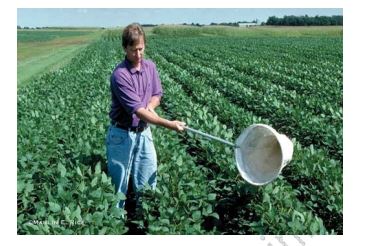

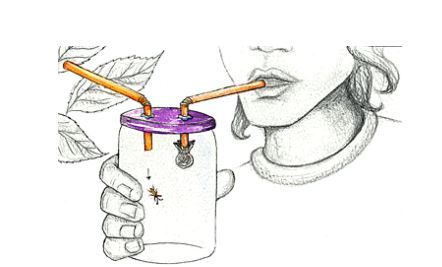
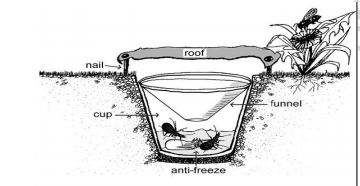

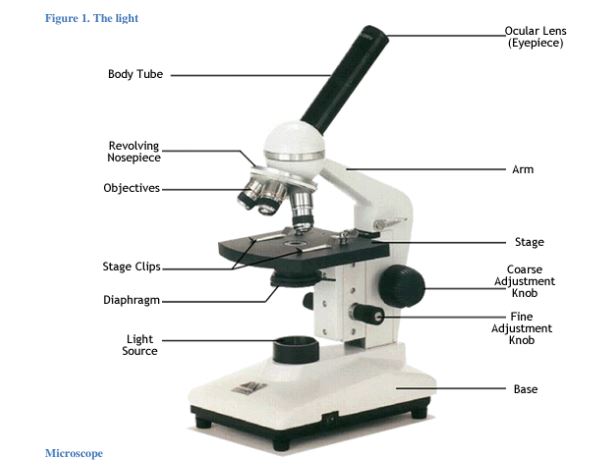

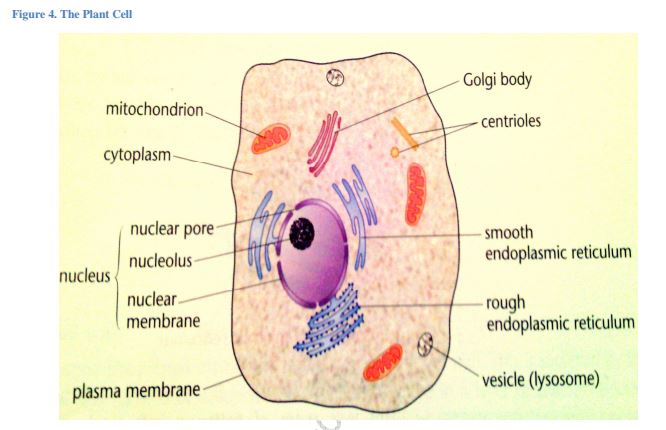
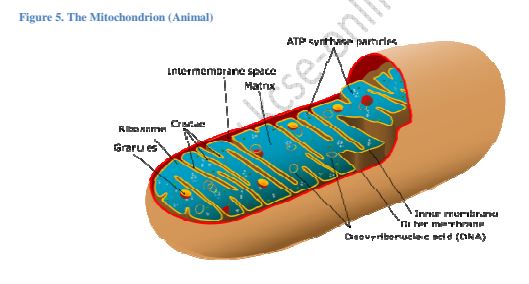
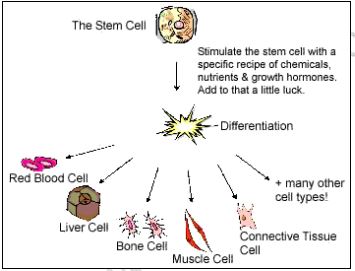
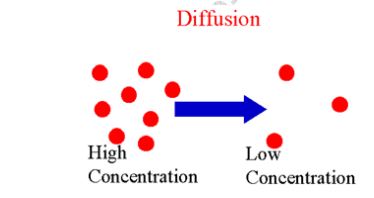
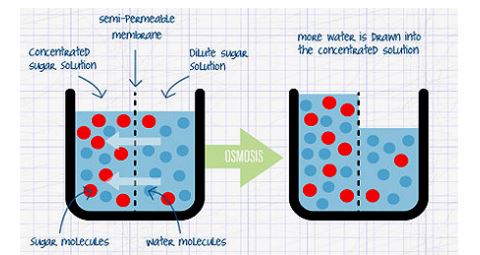
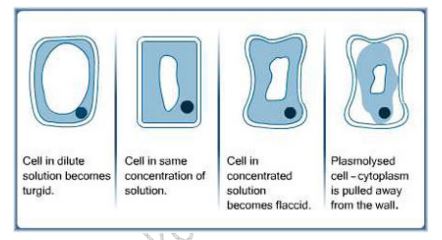
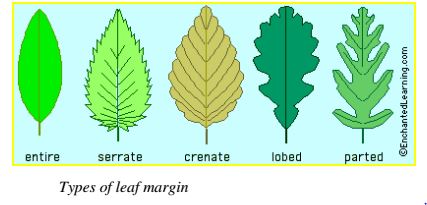
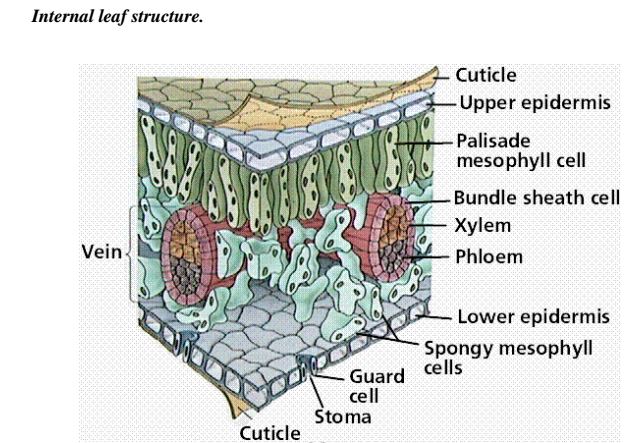
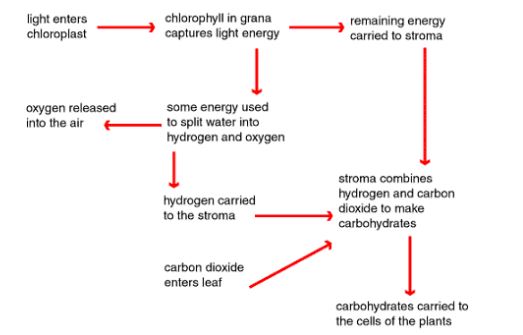
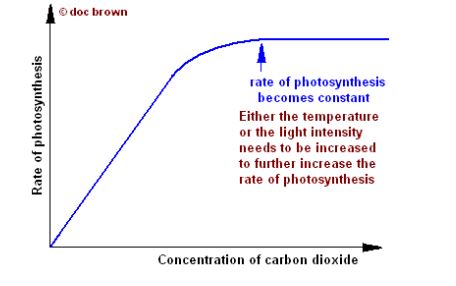
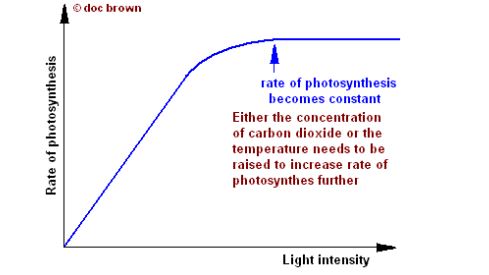
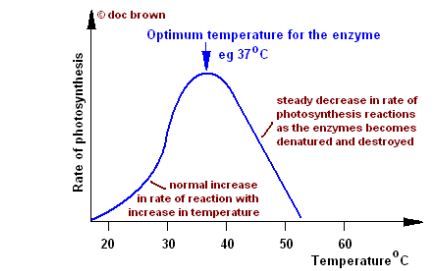
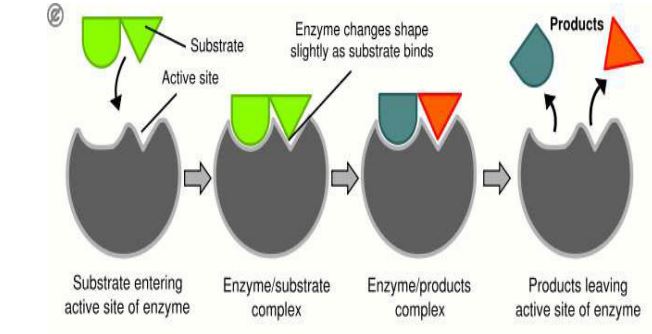
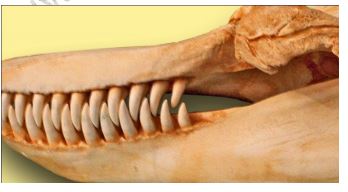
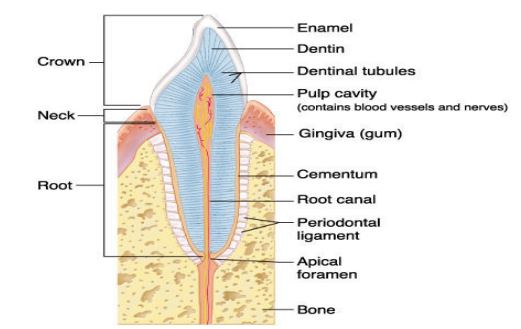
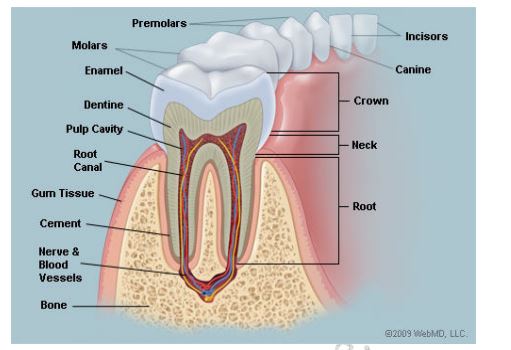
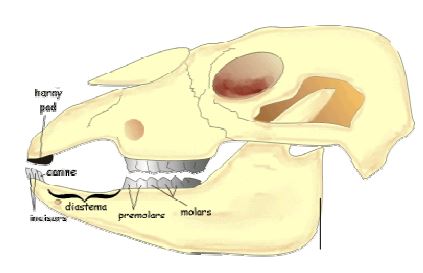
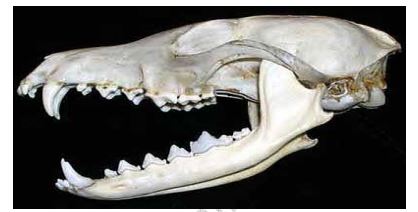
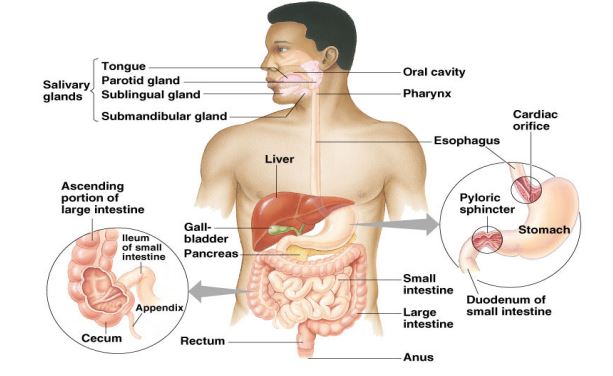
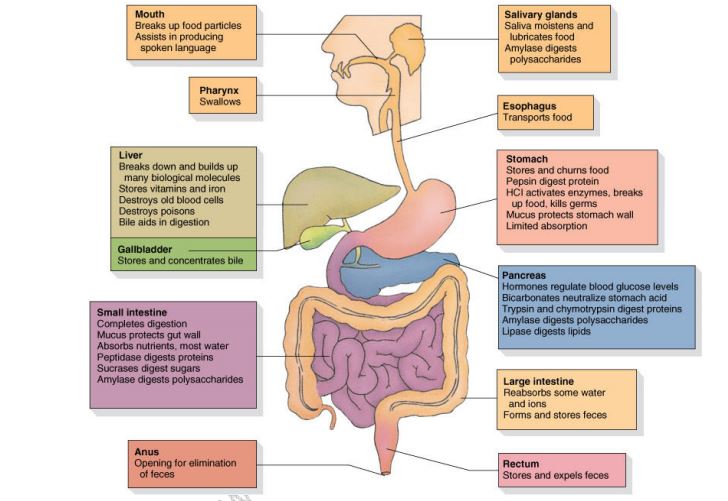
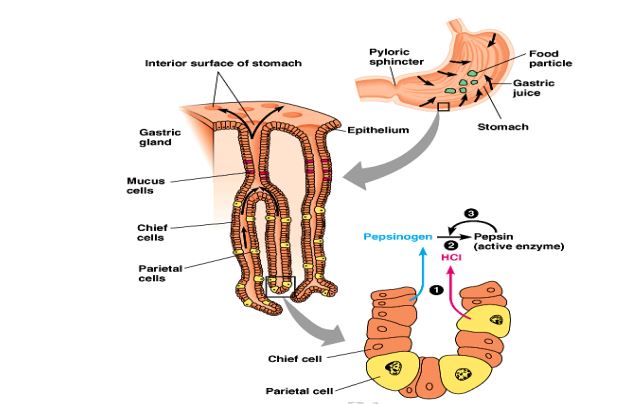
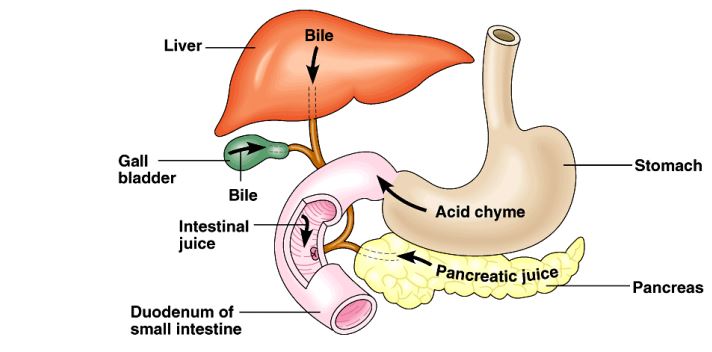
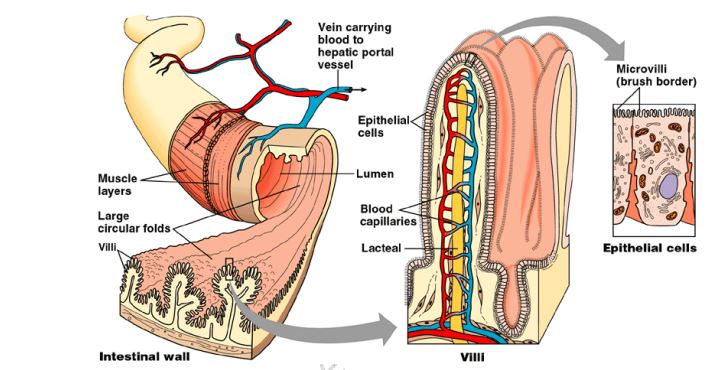

Like it
Hello
Thanks so much for all the help you have give me
hi